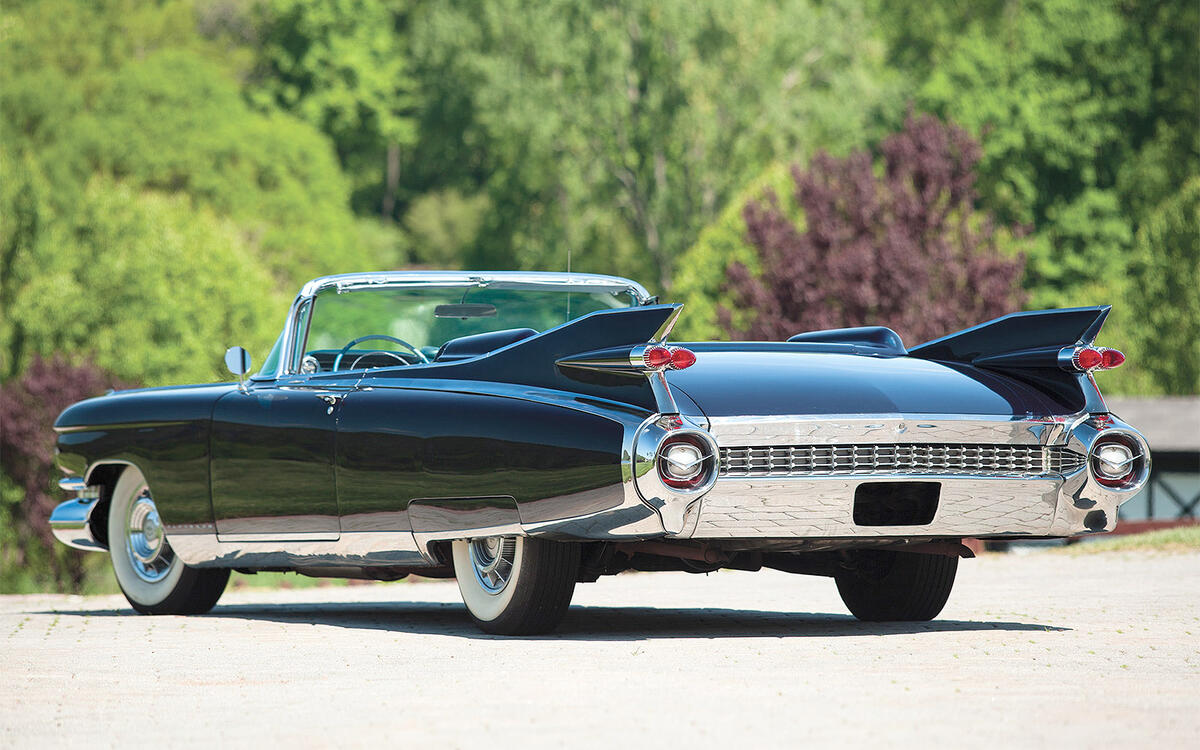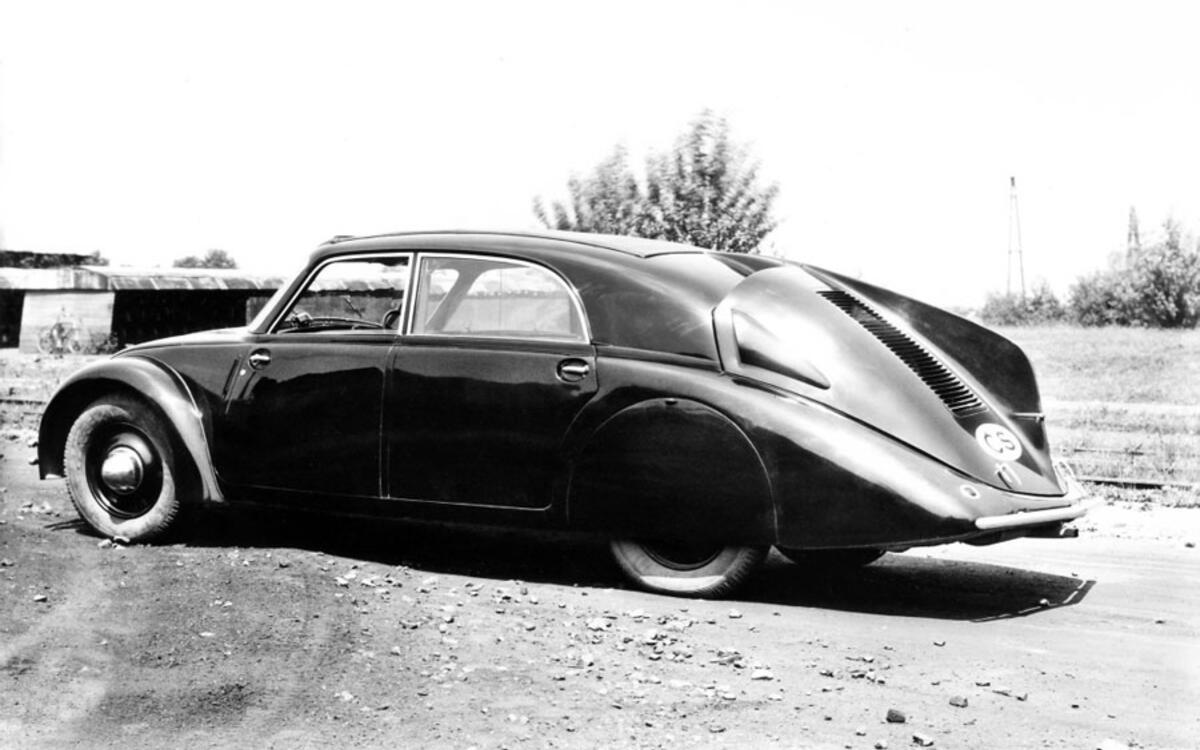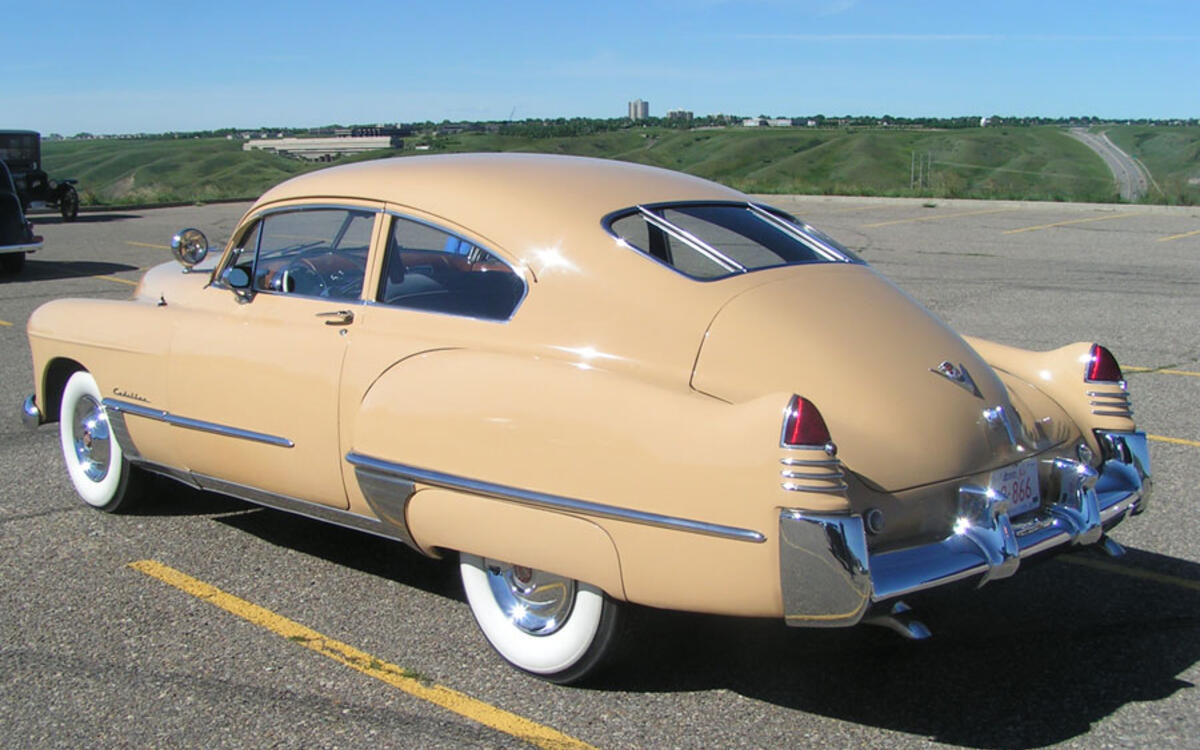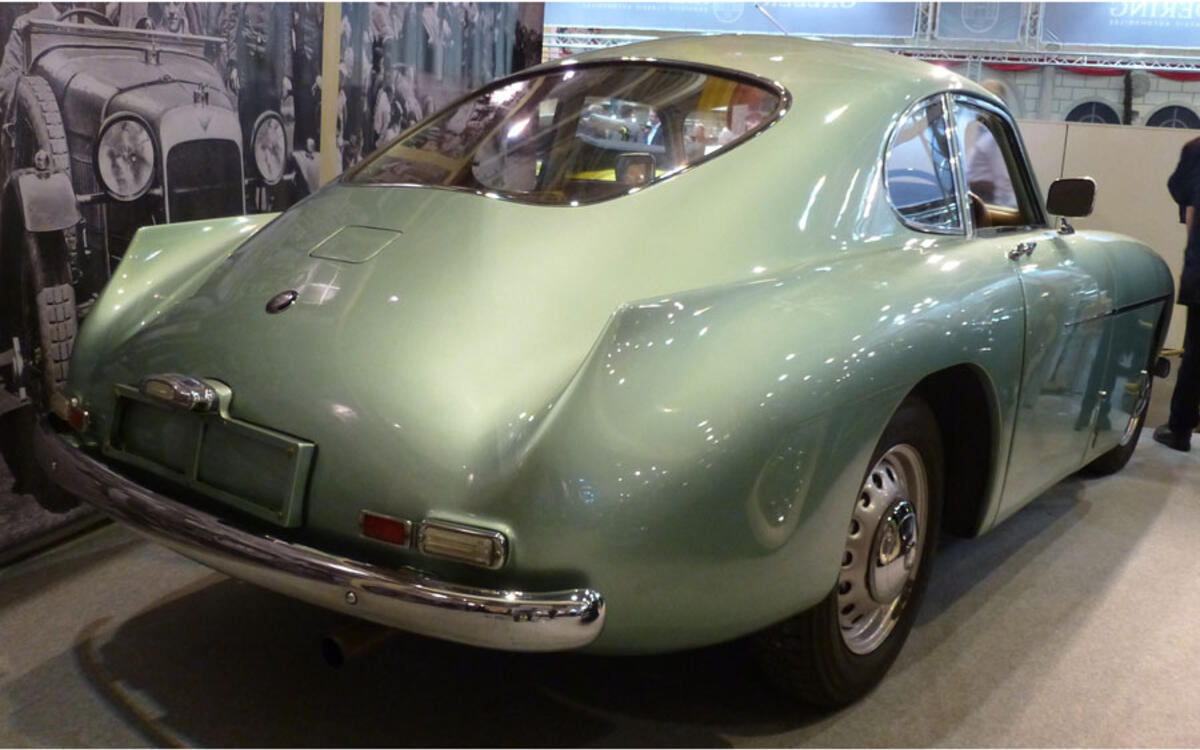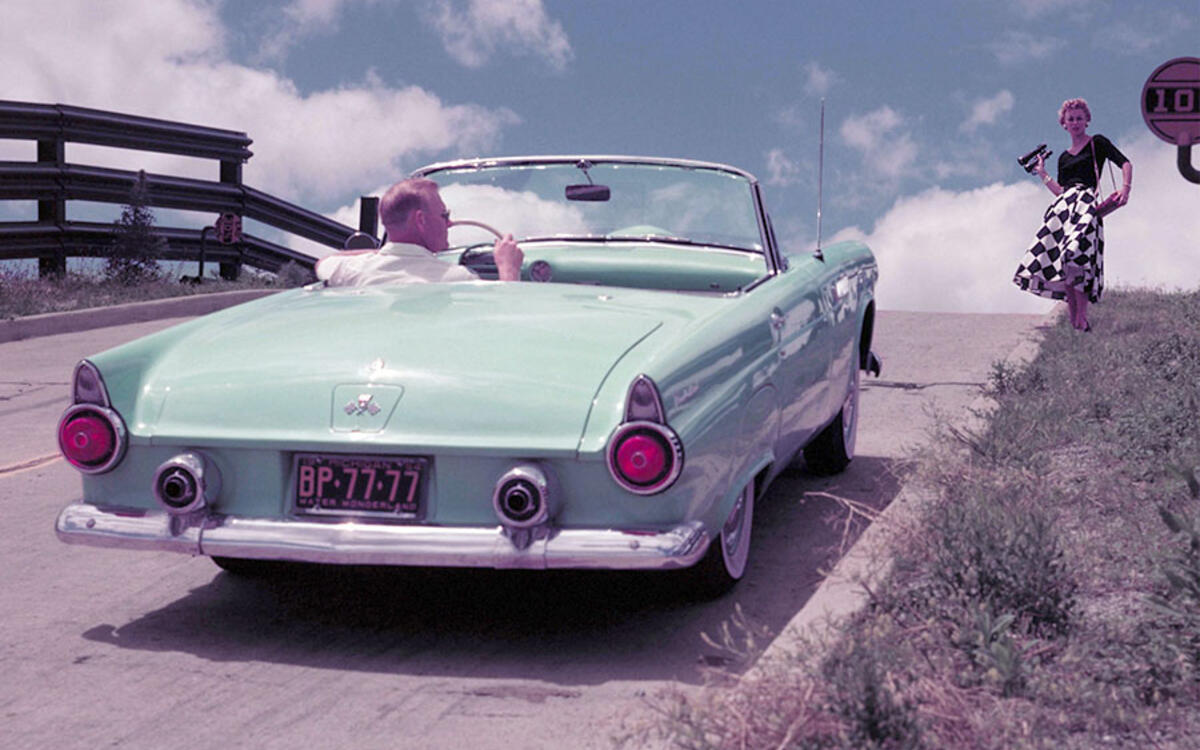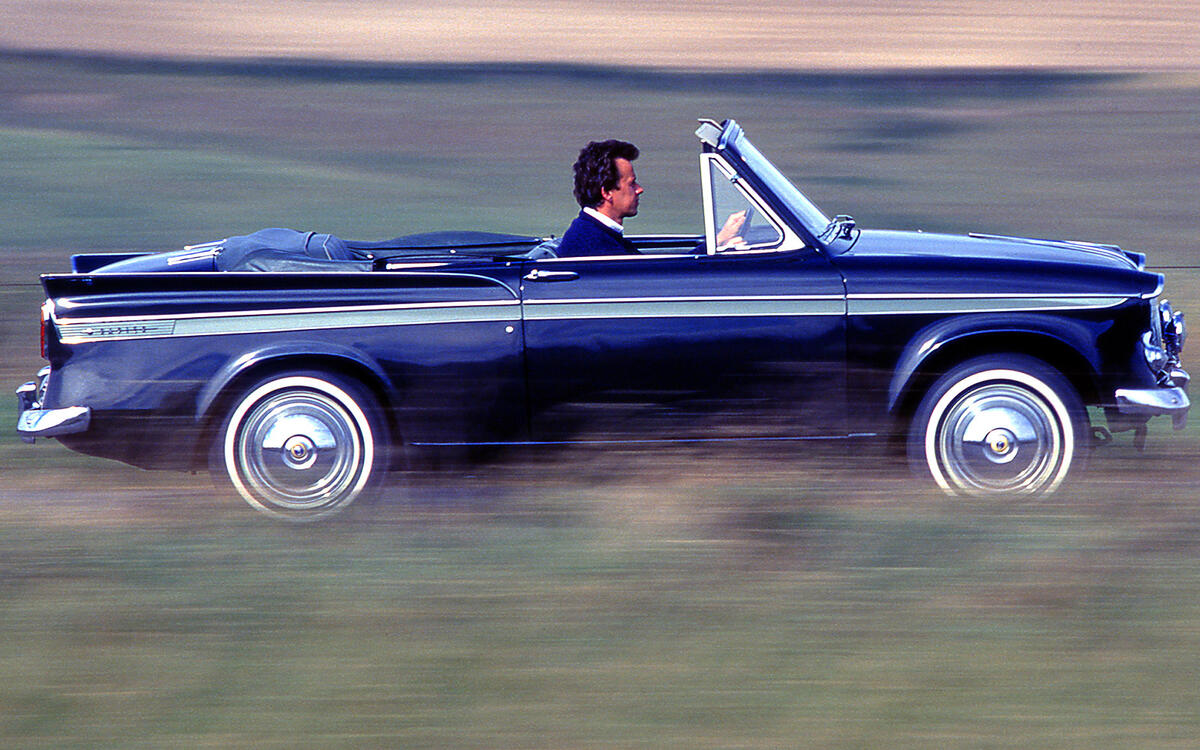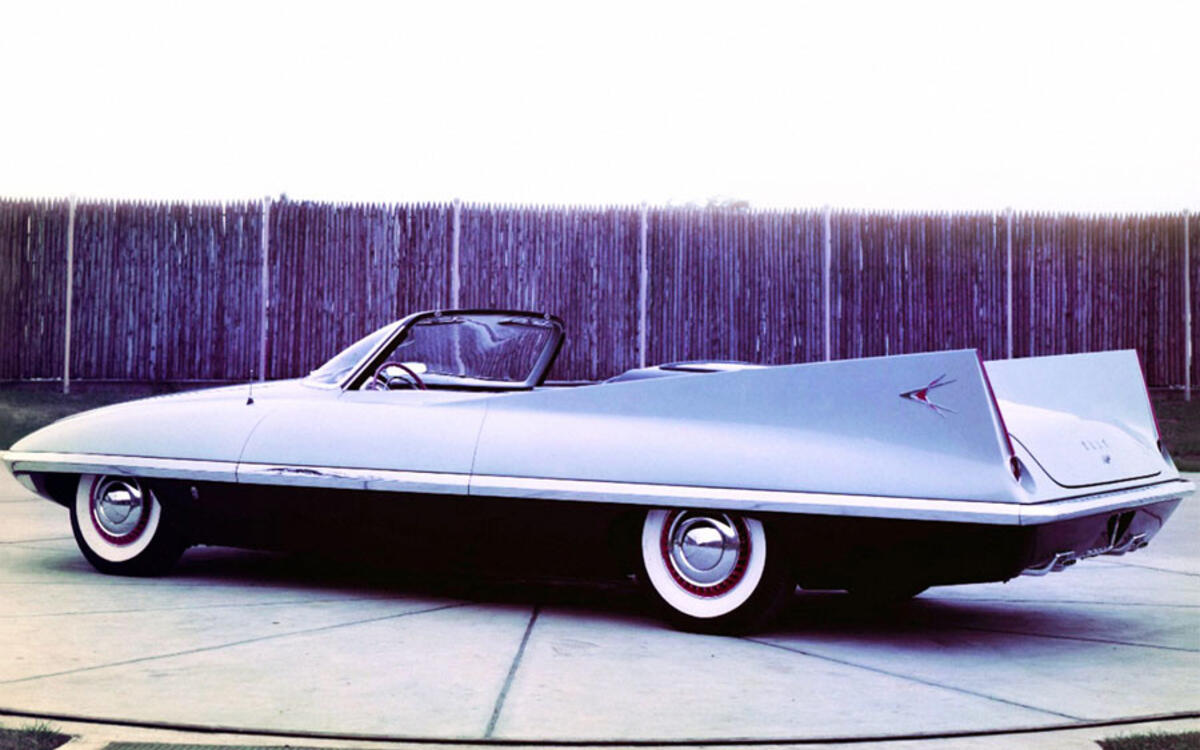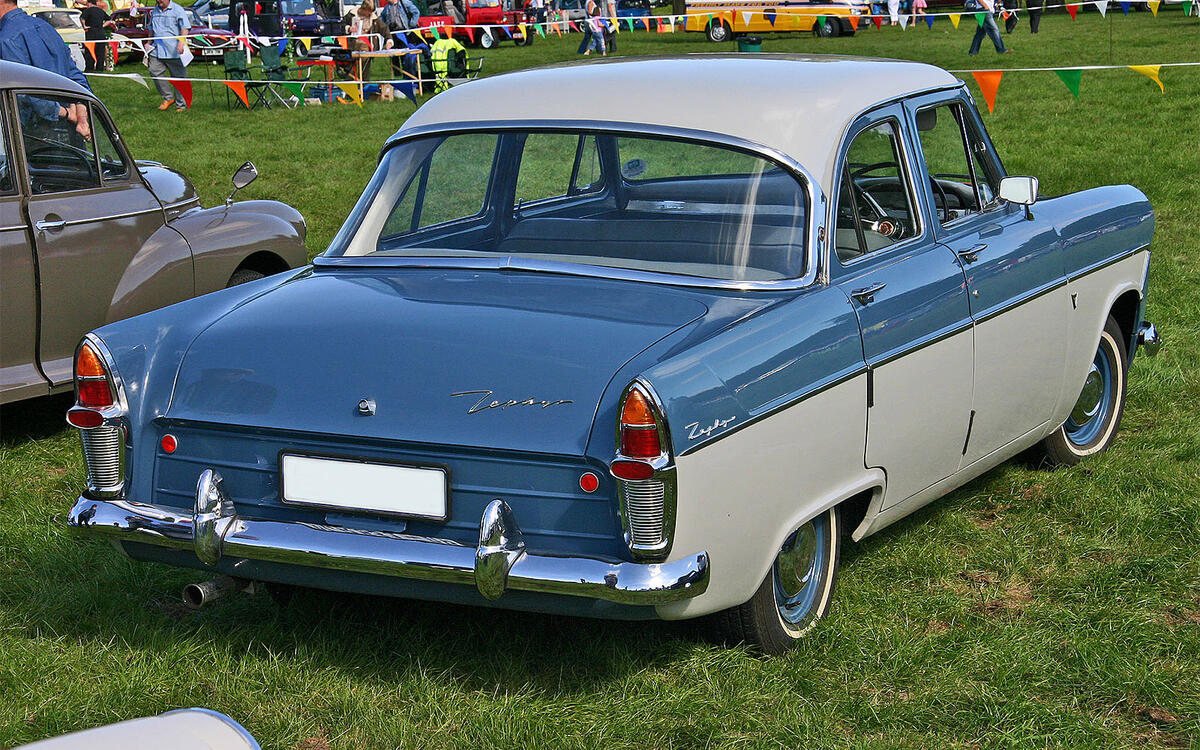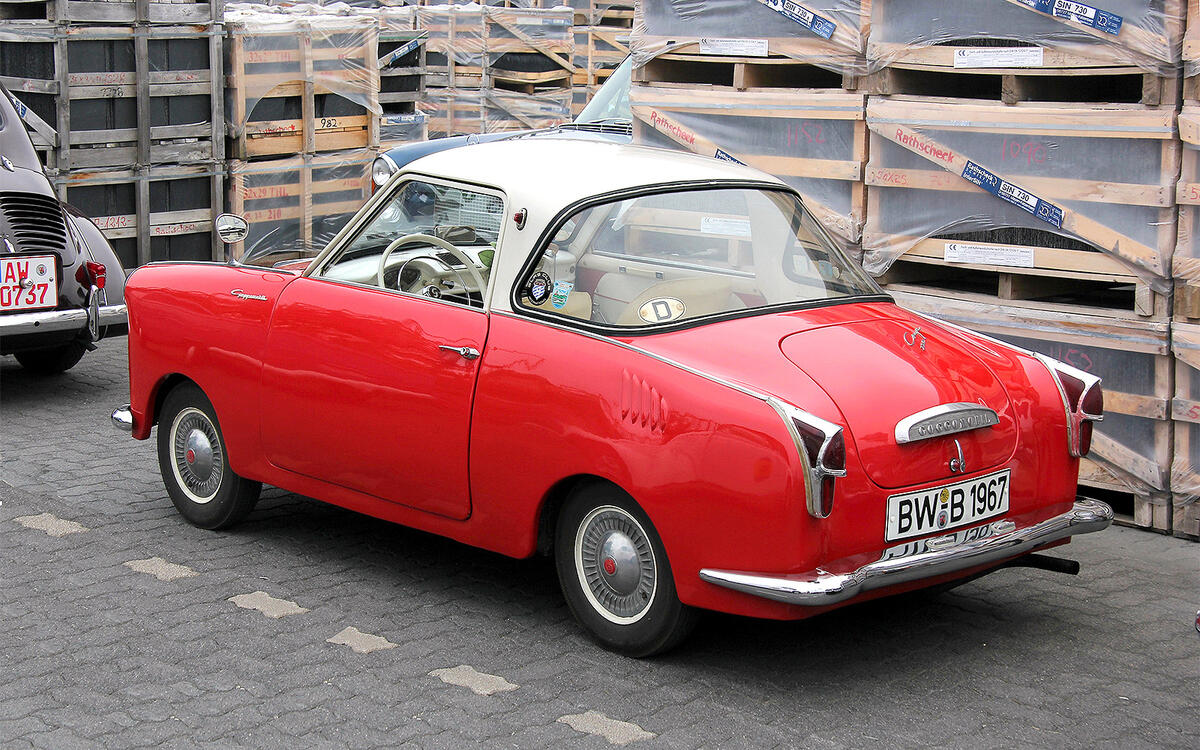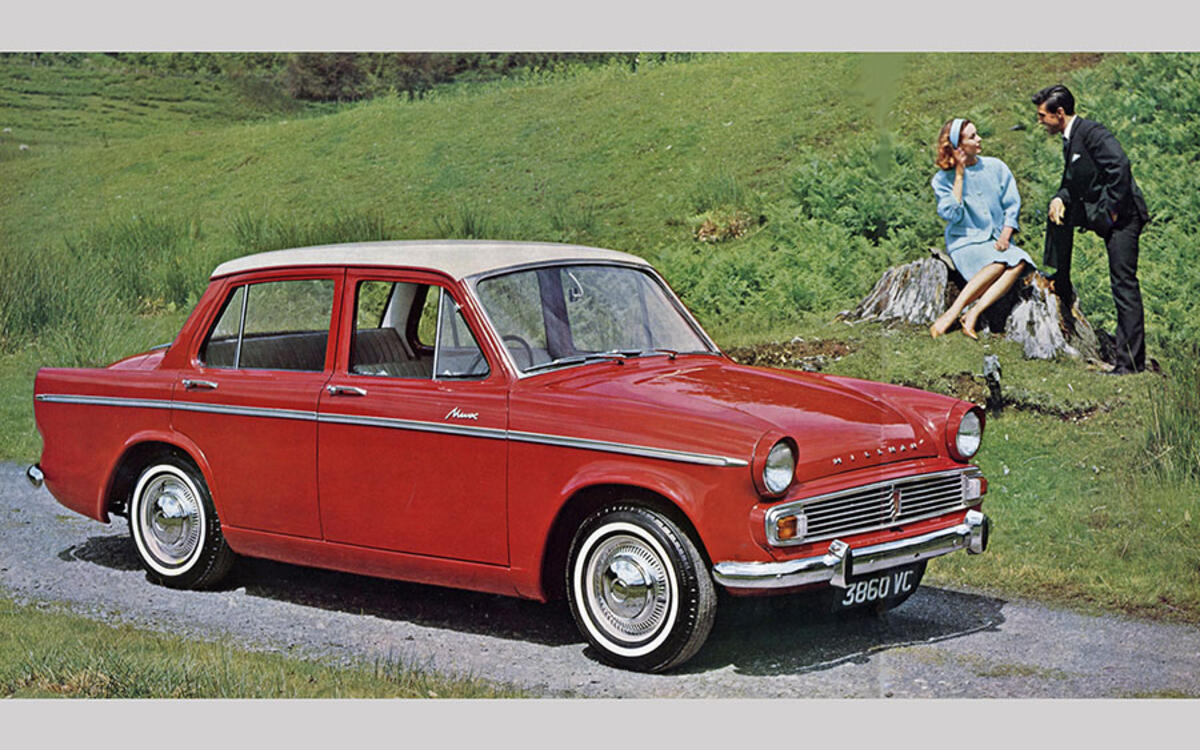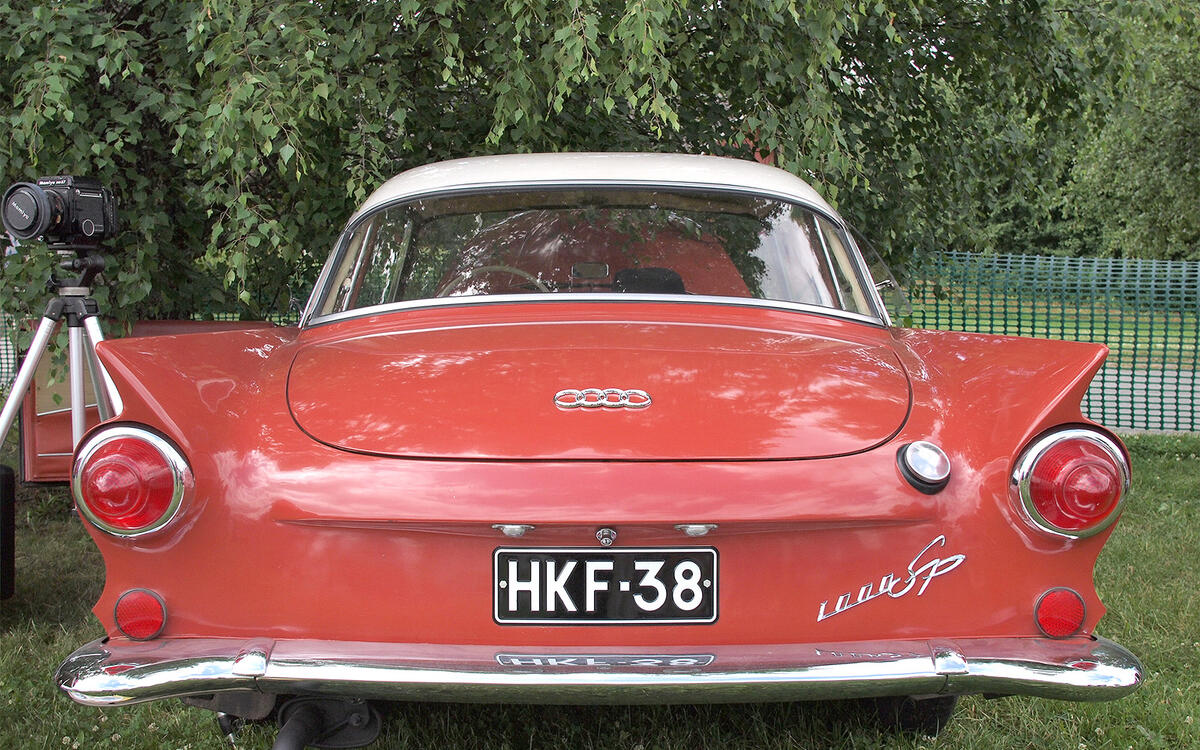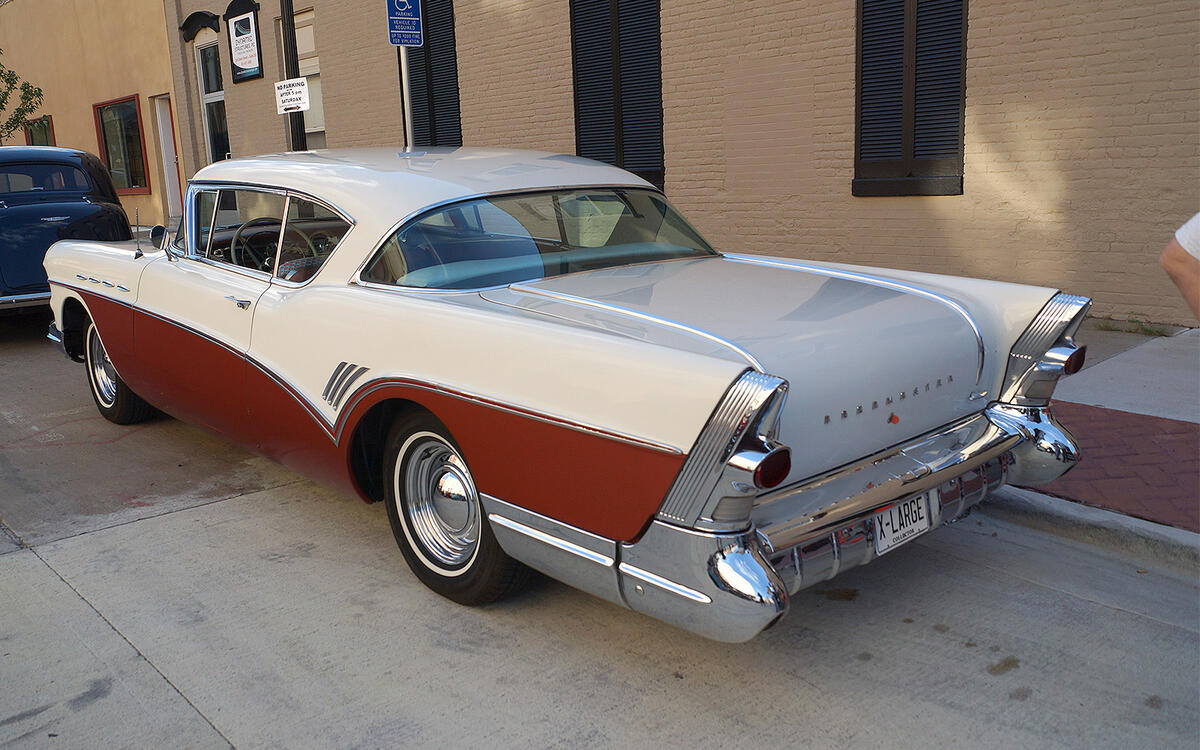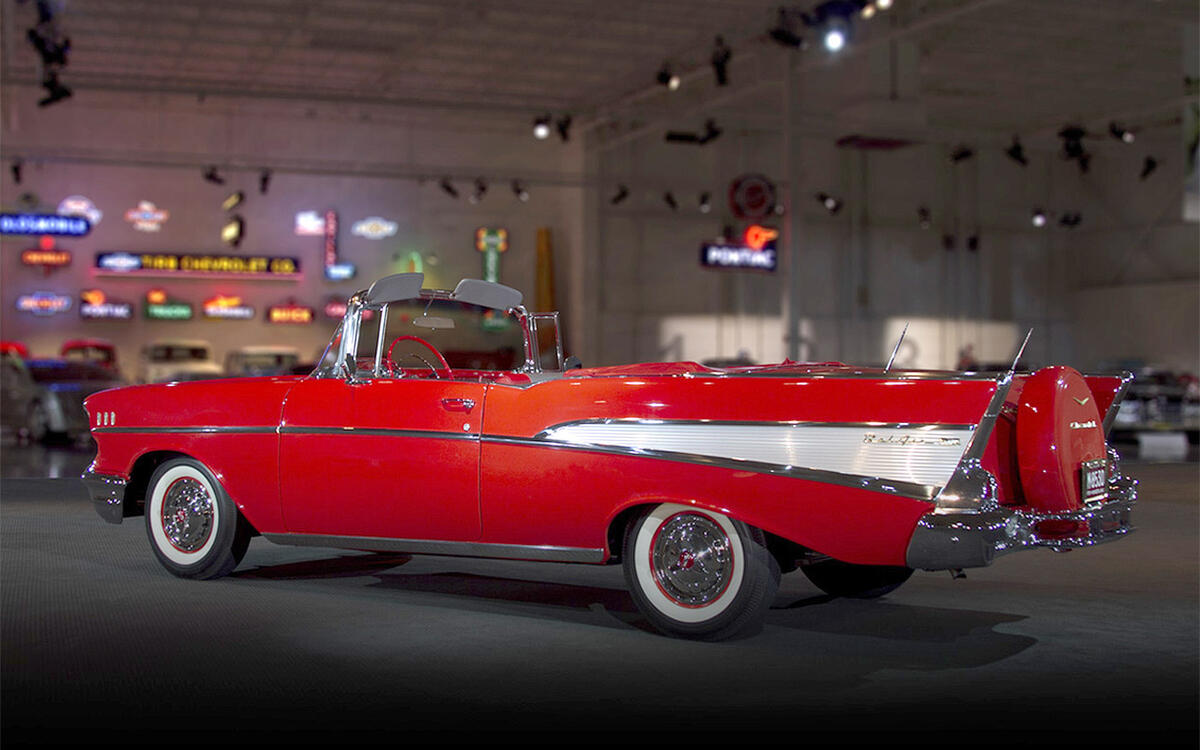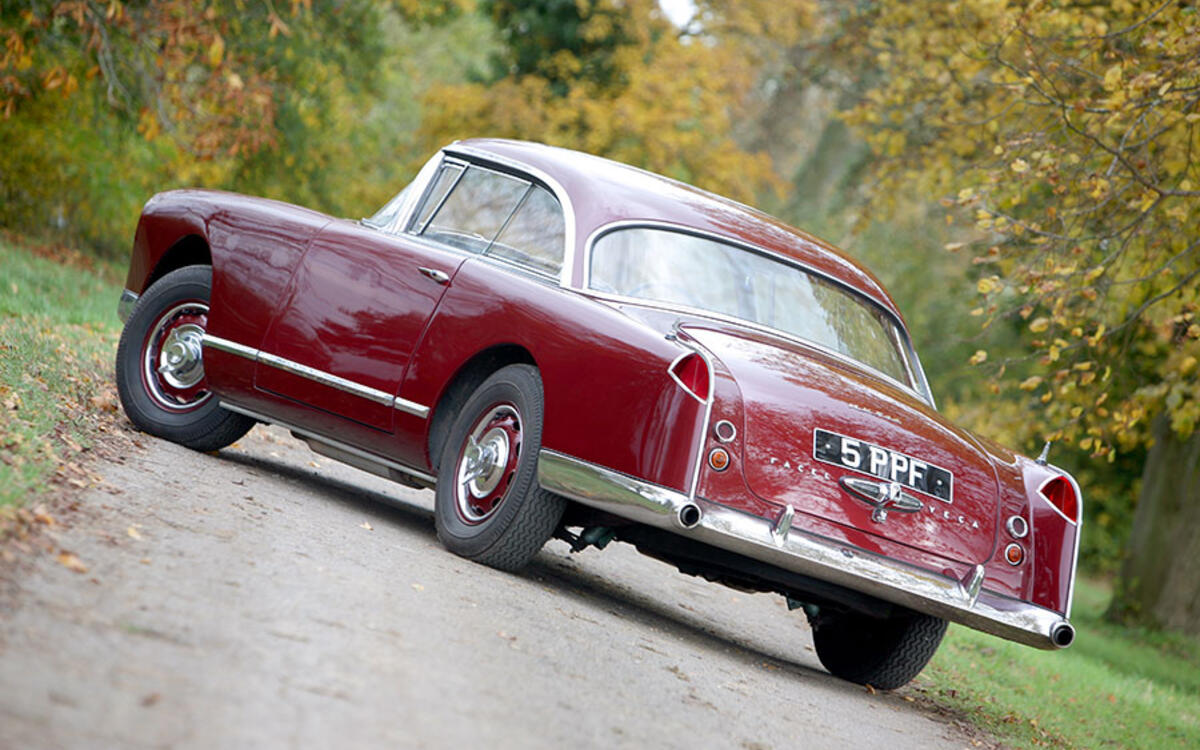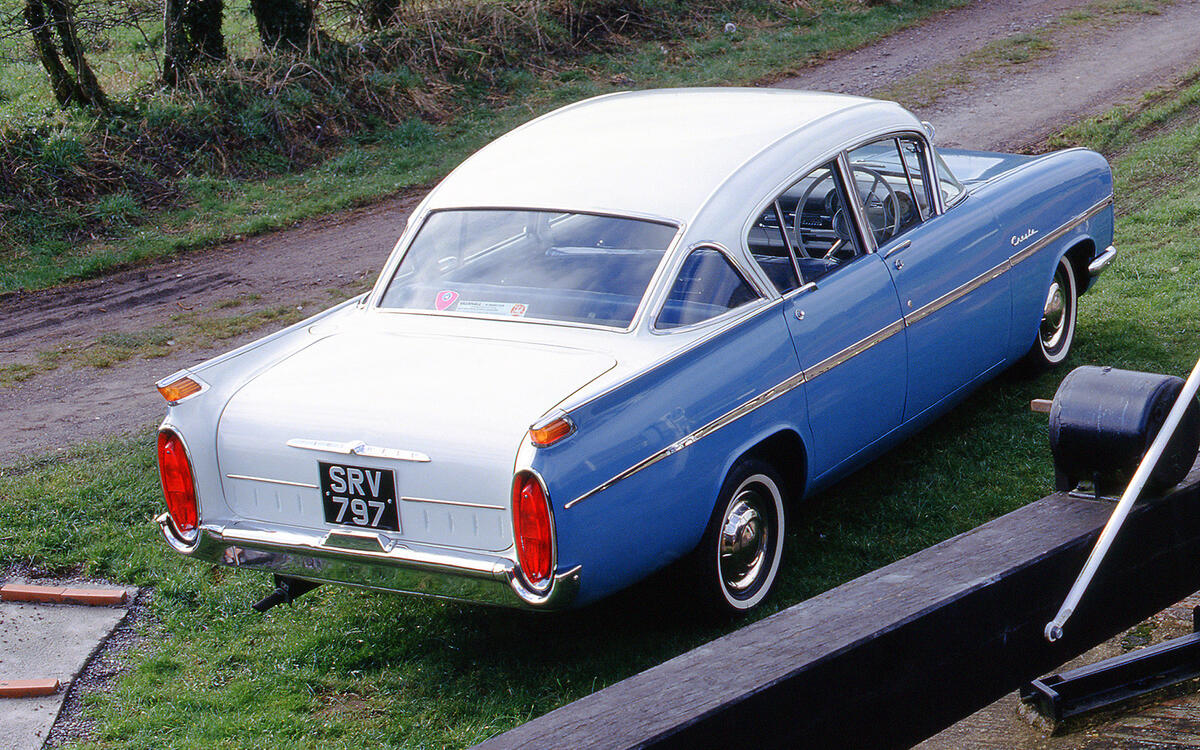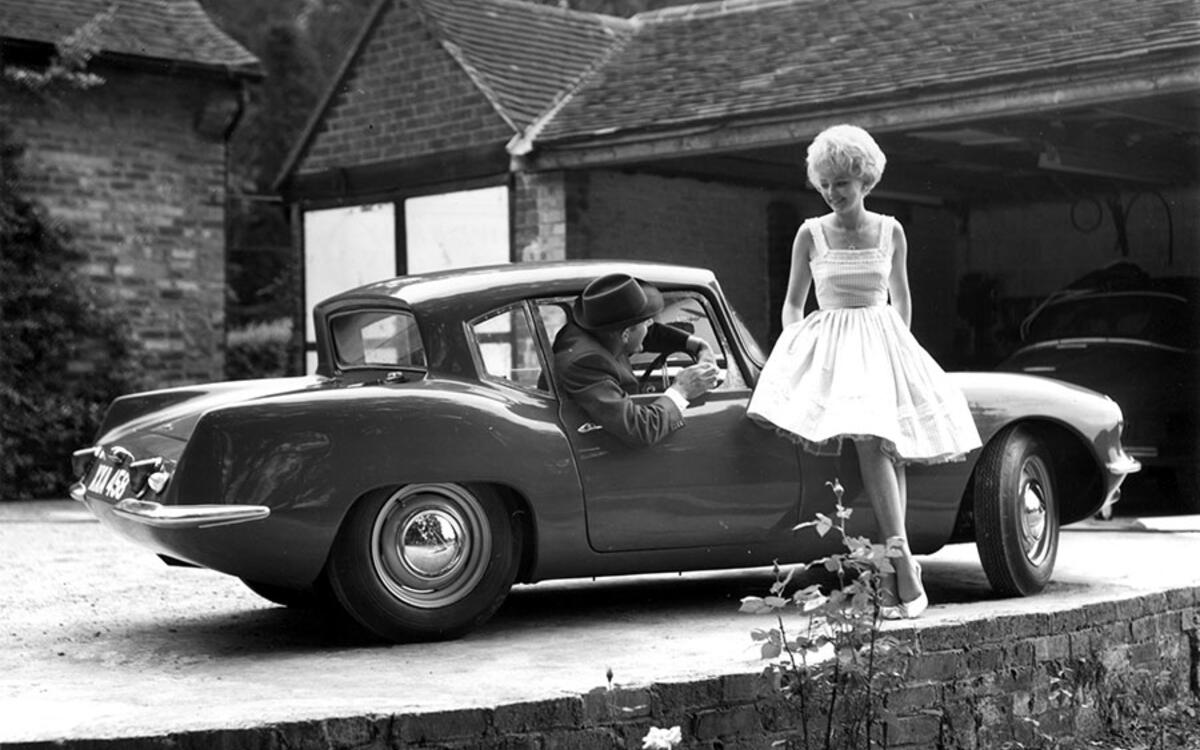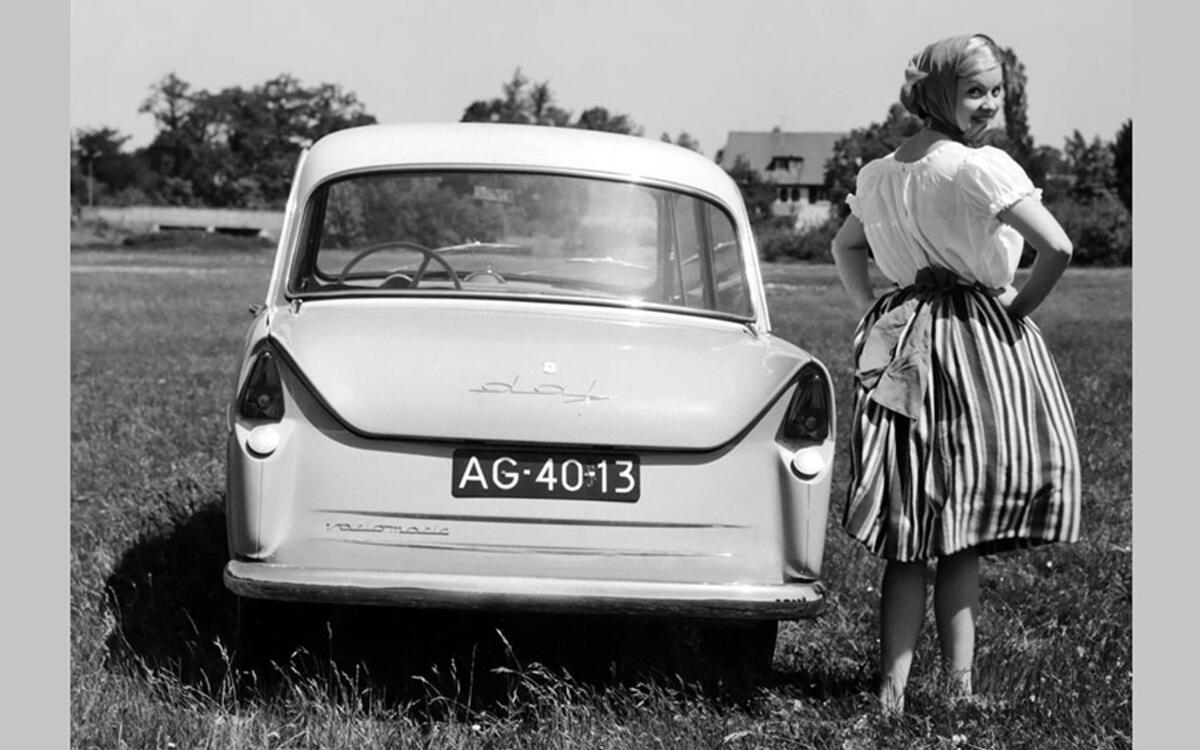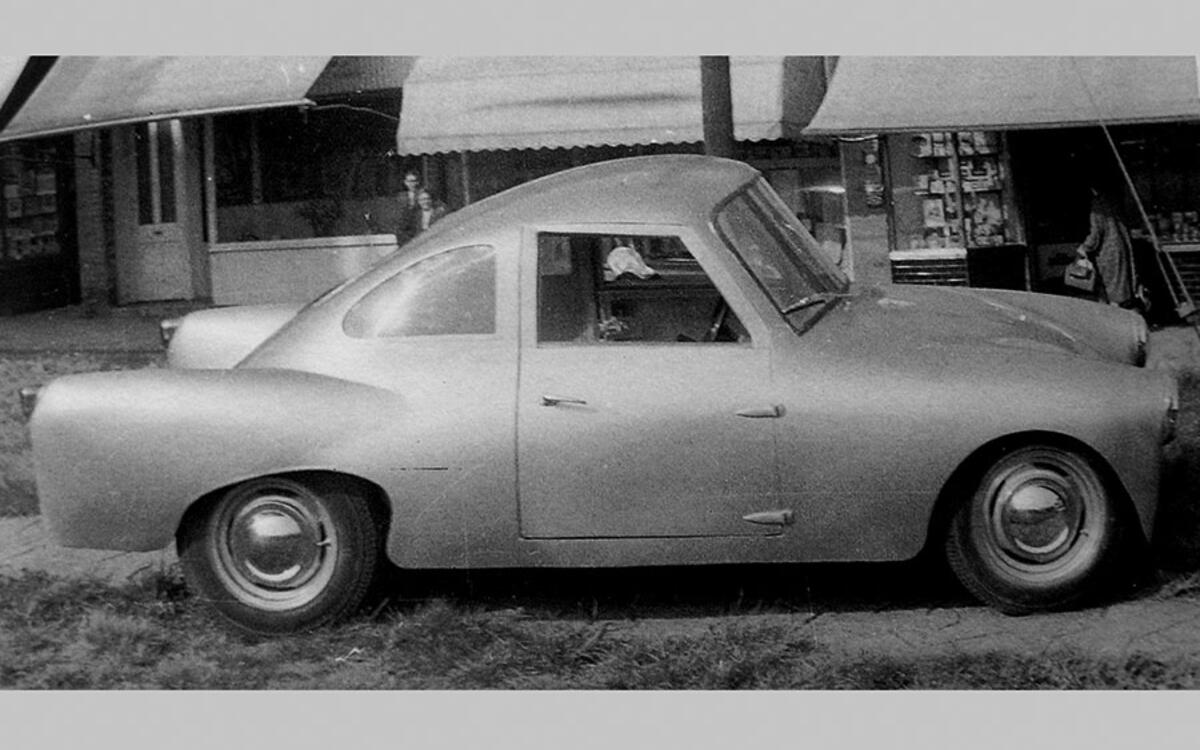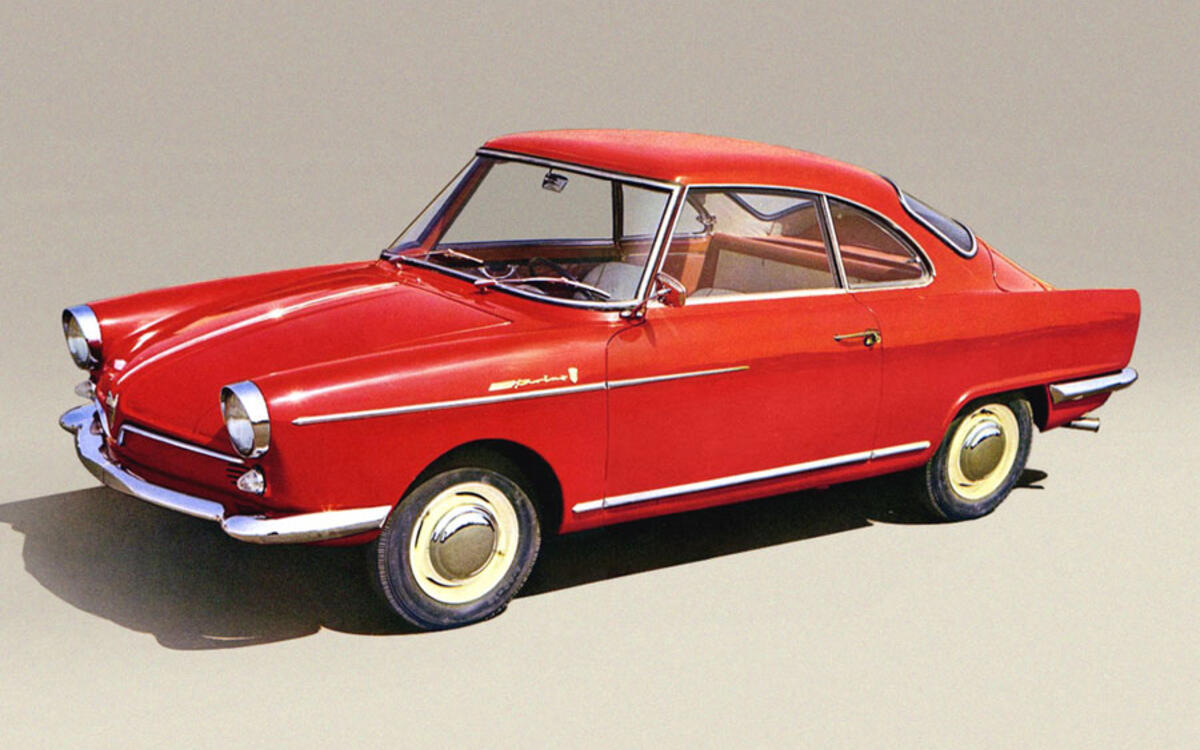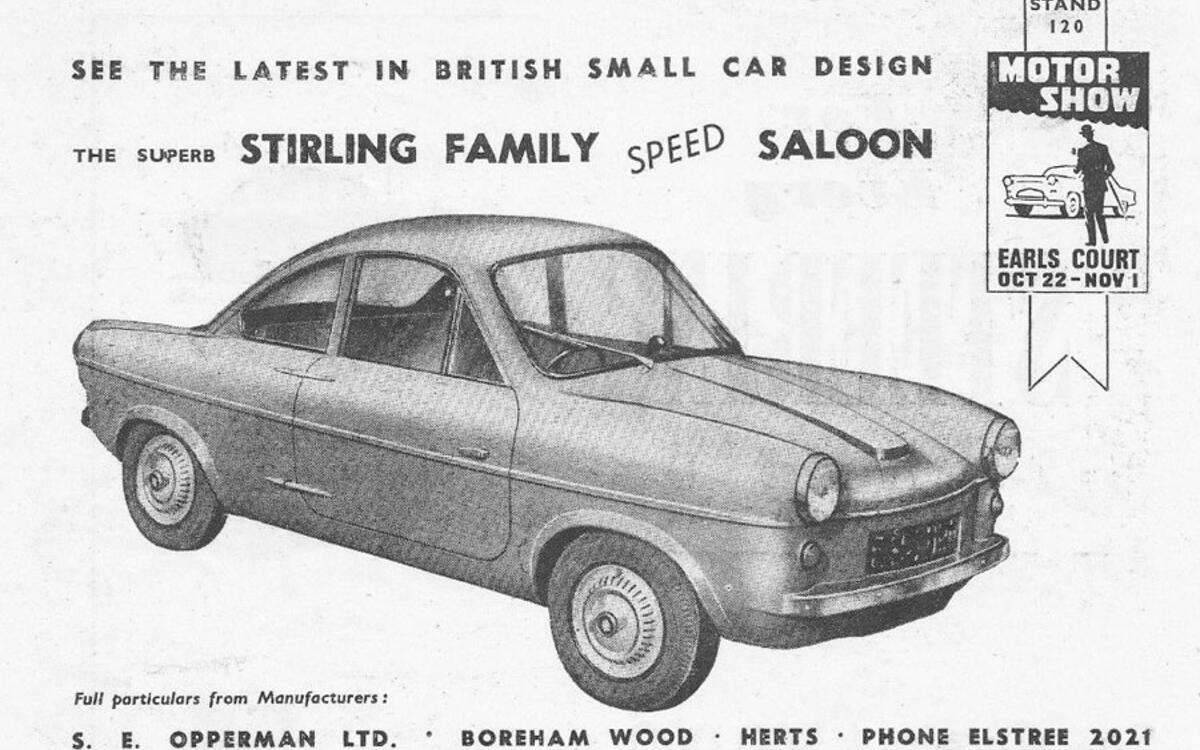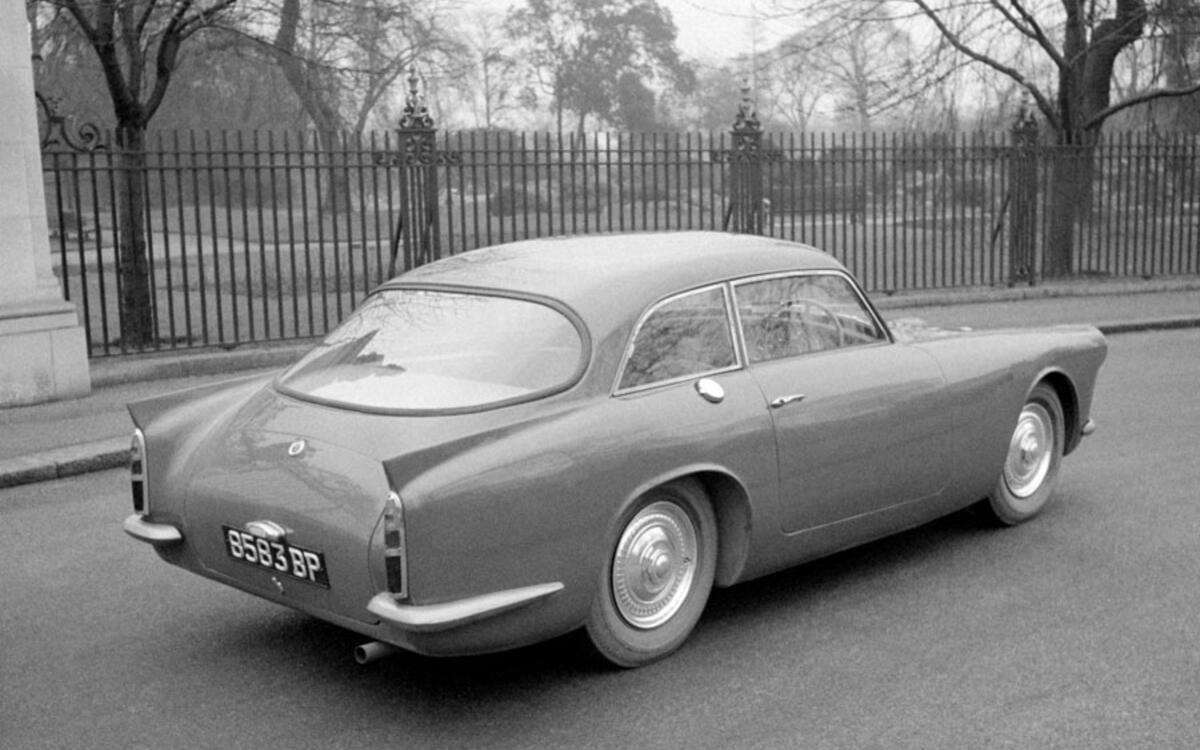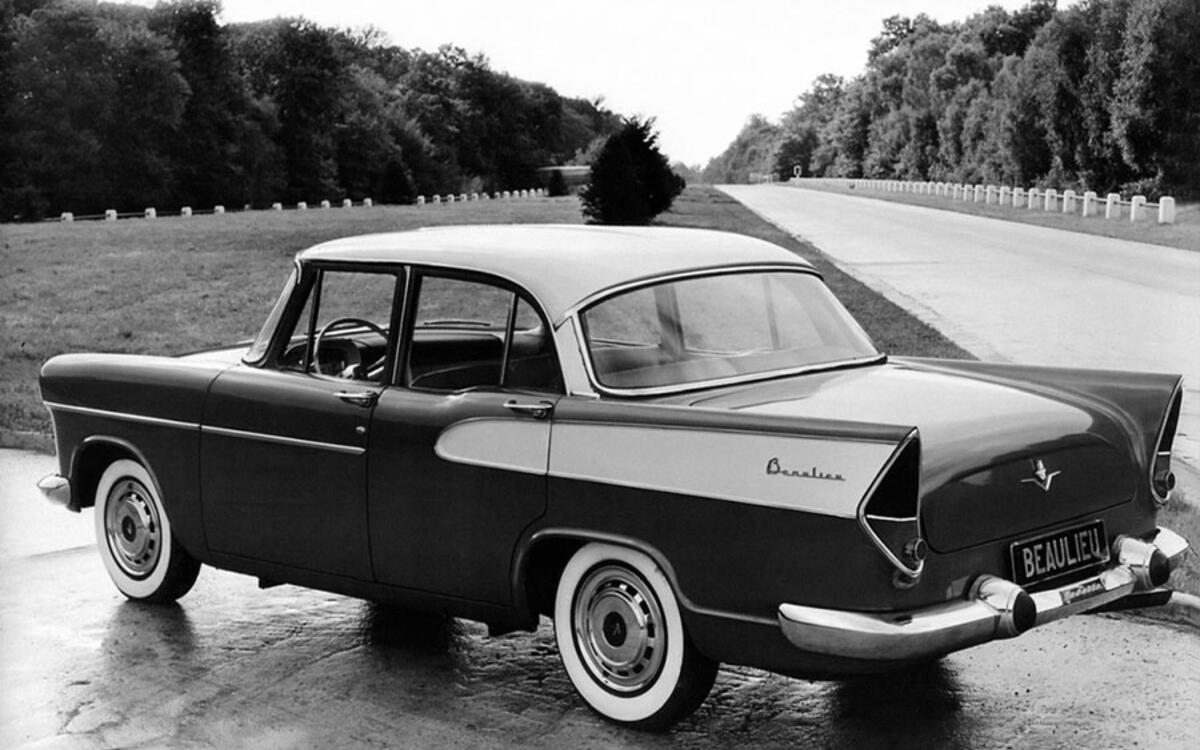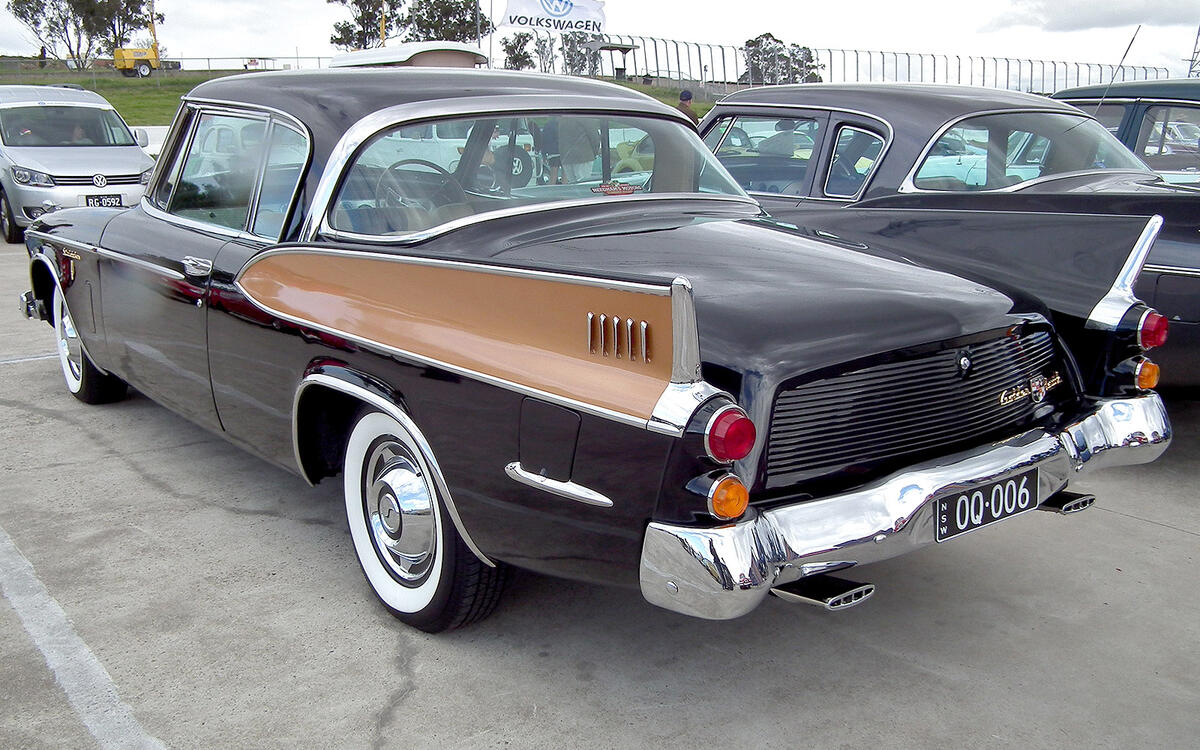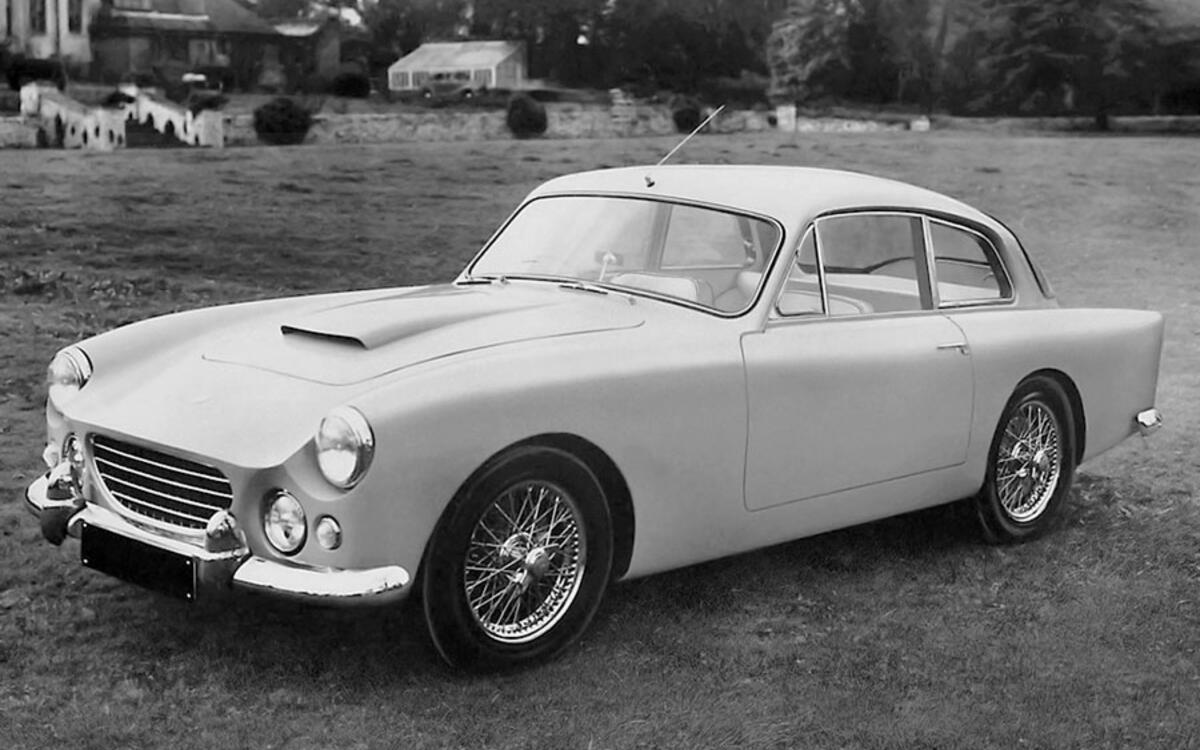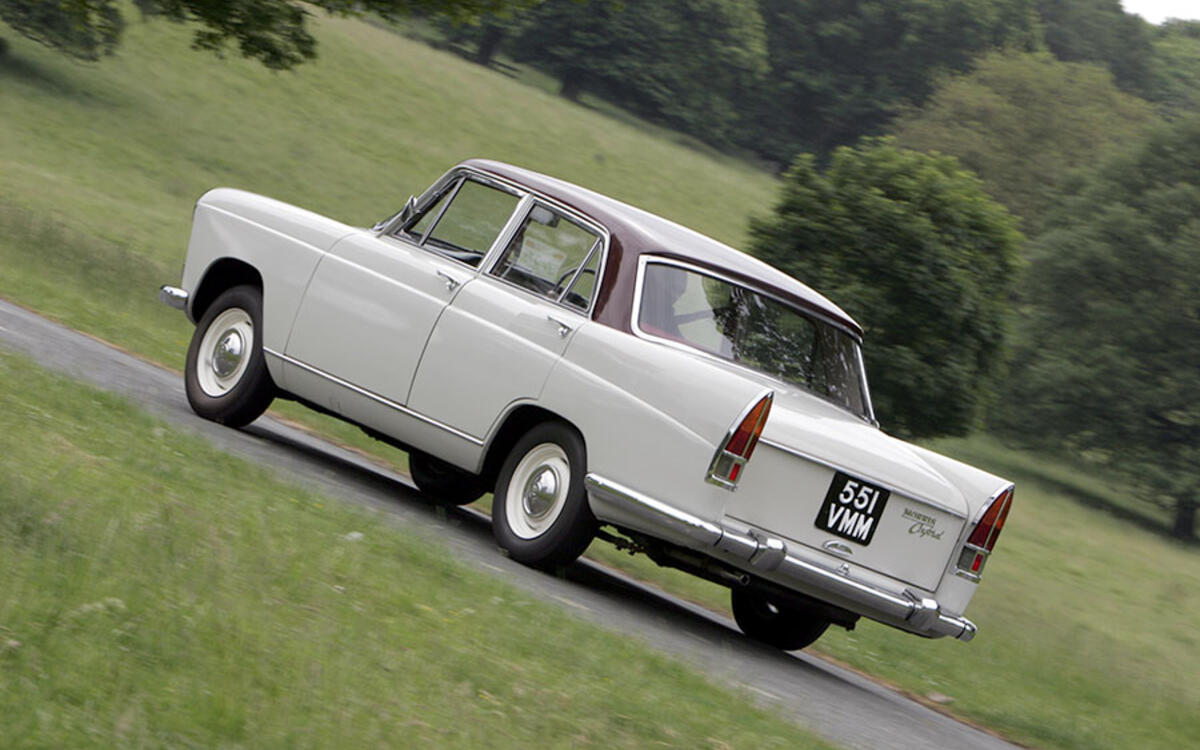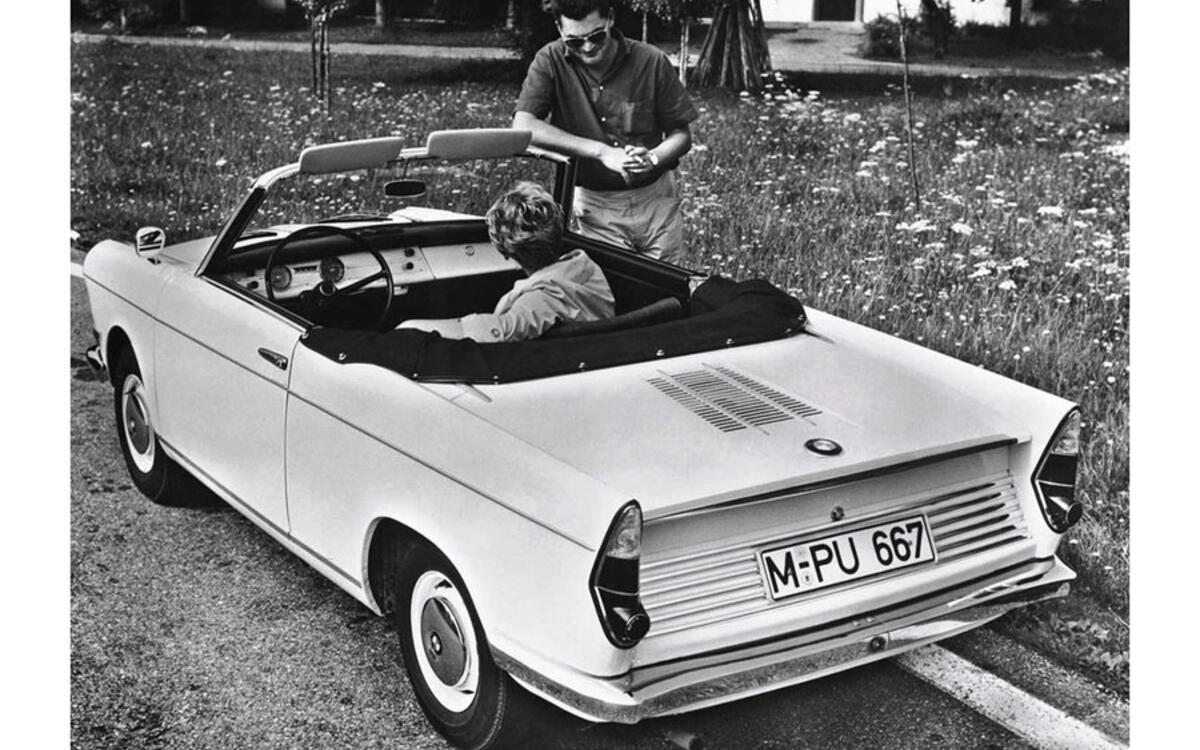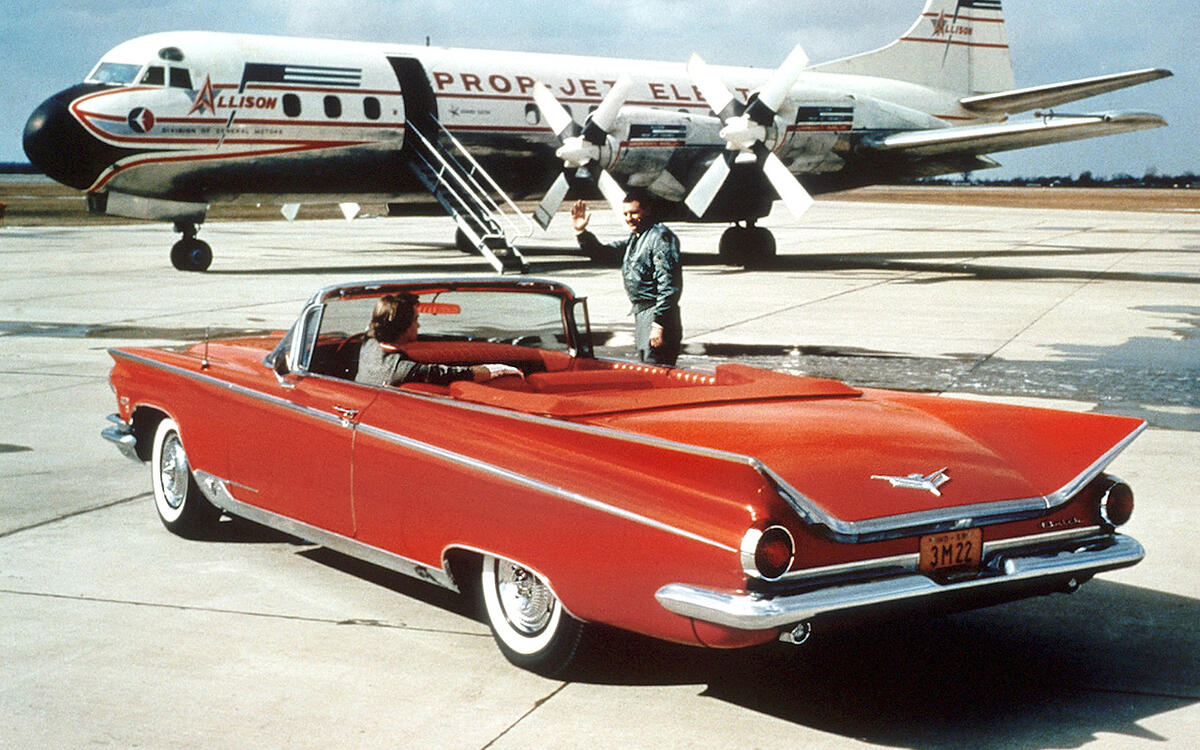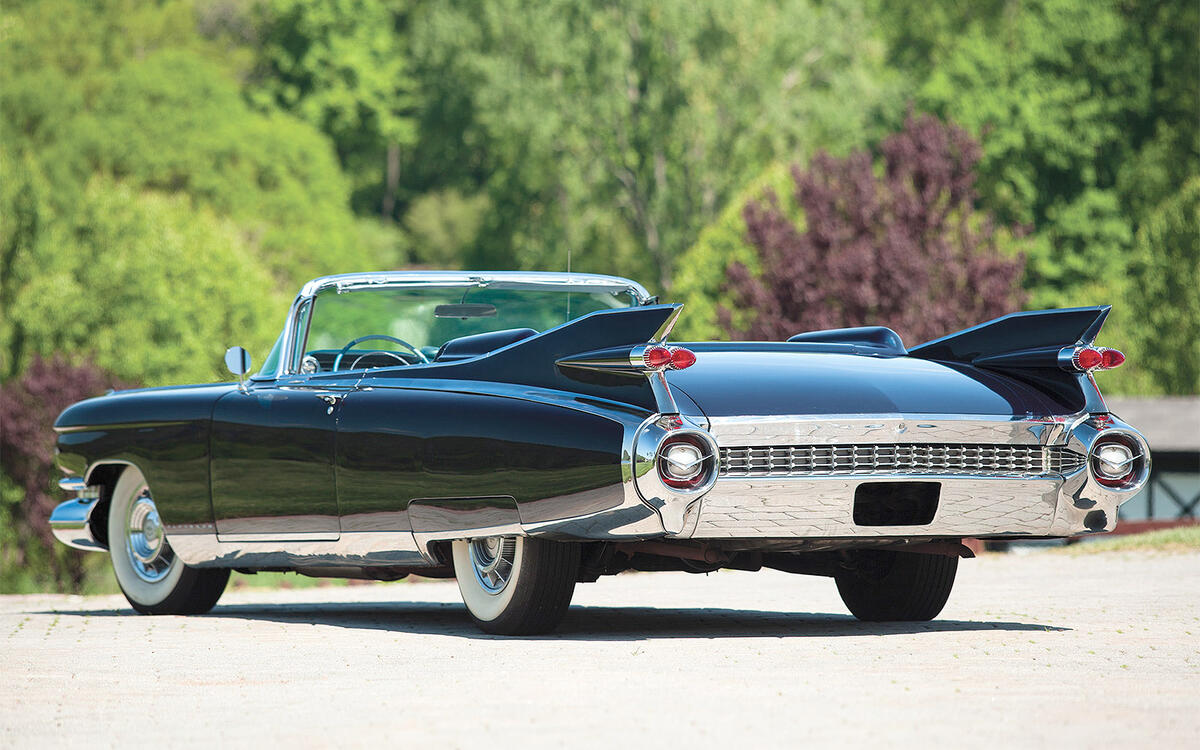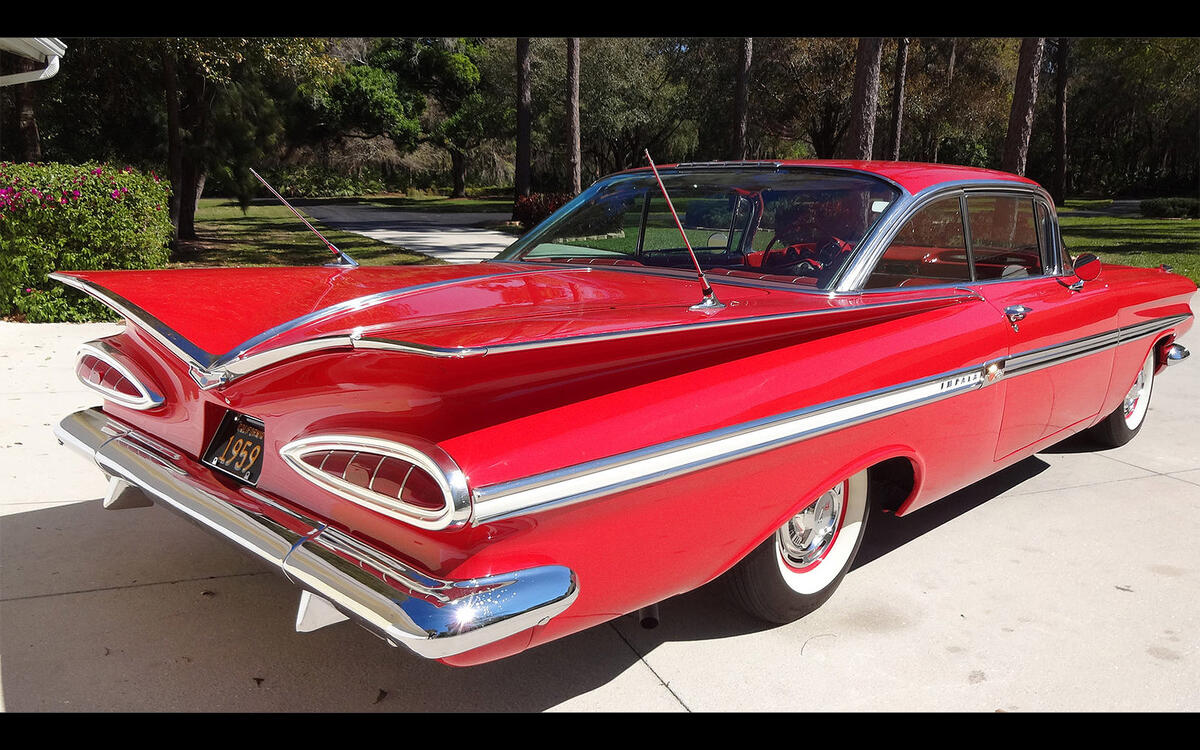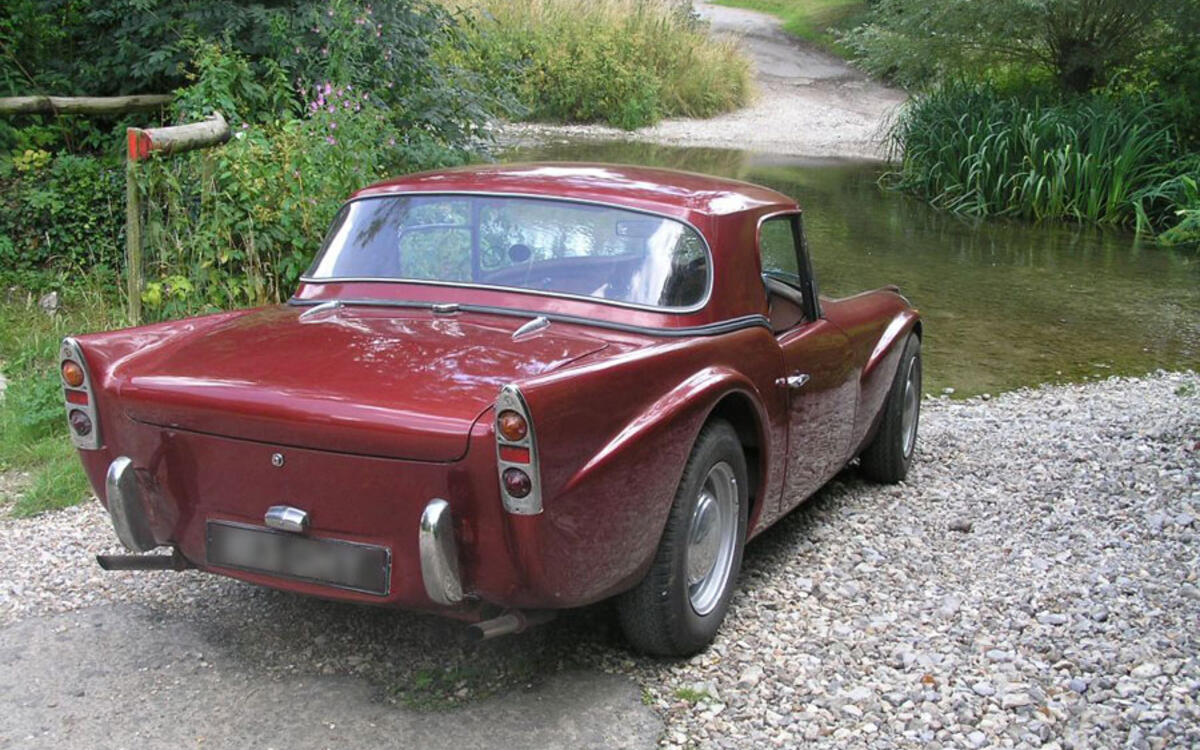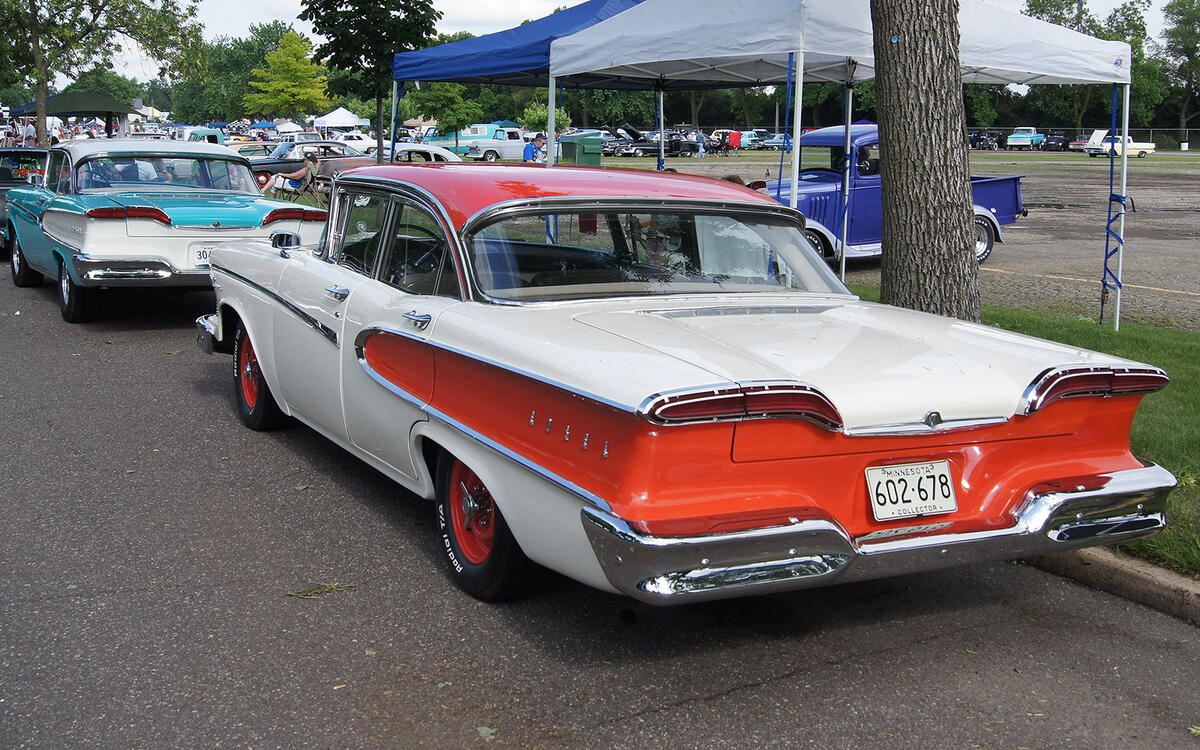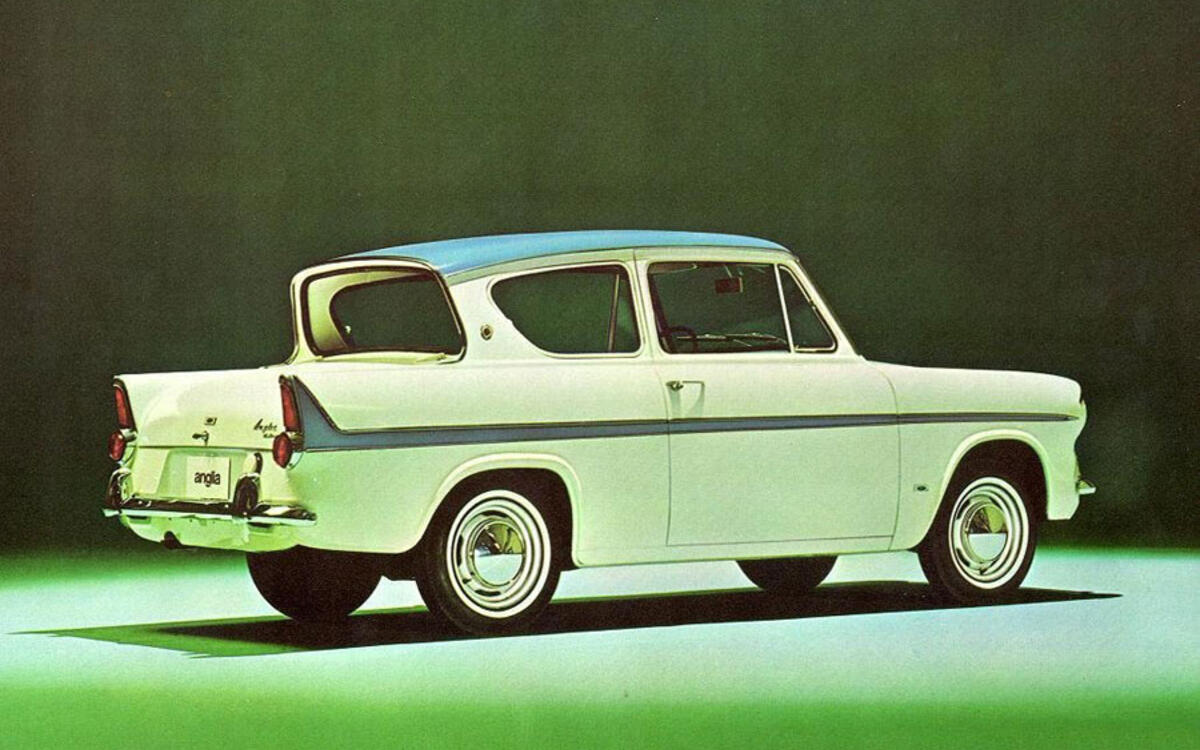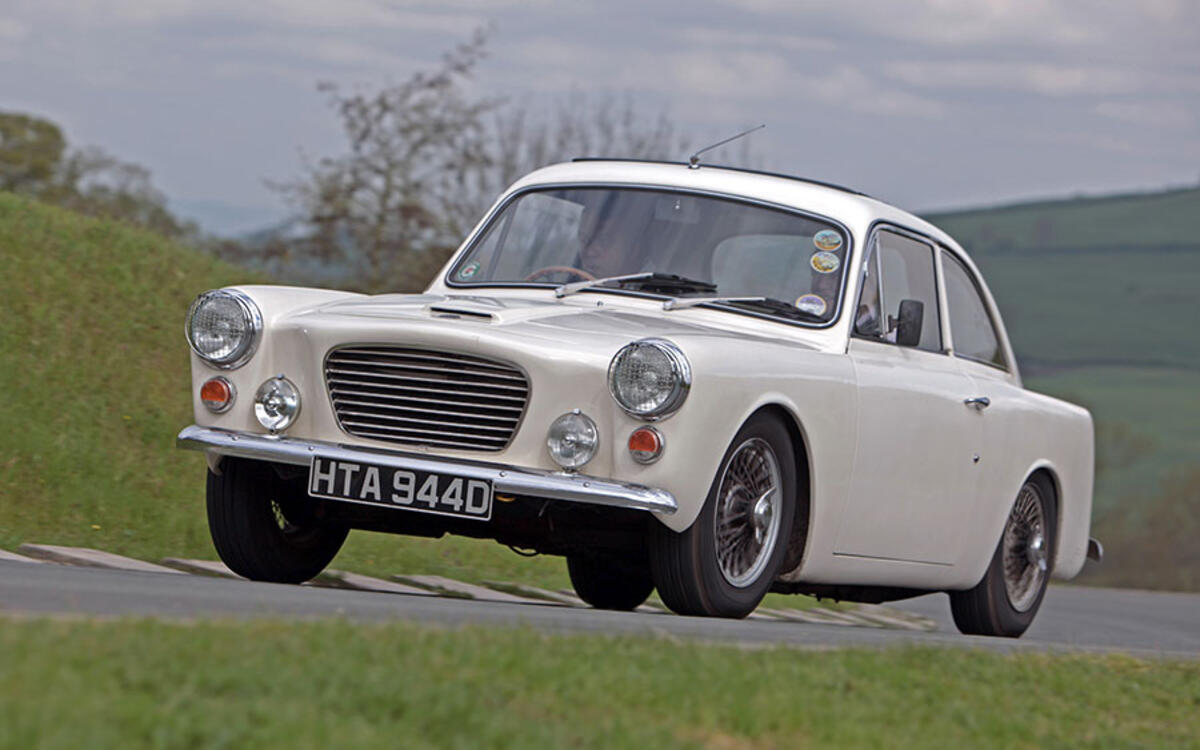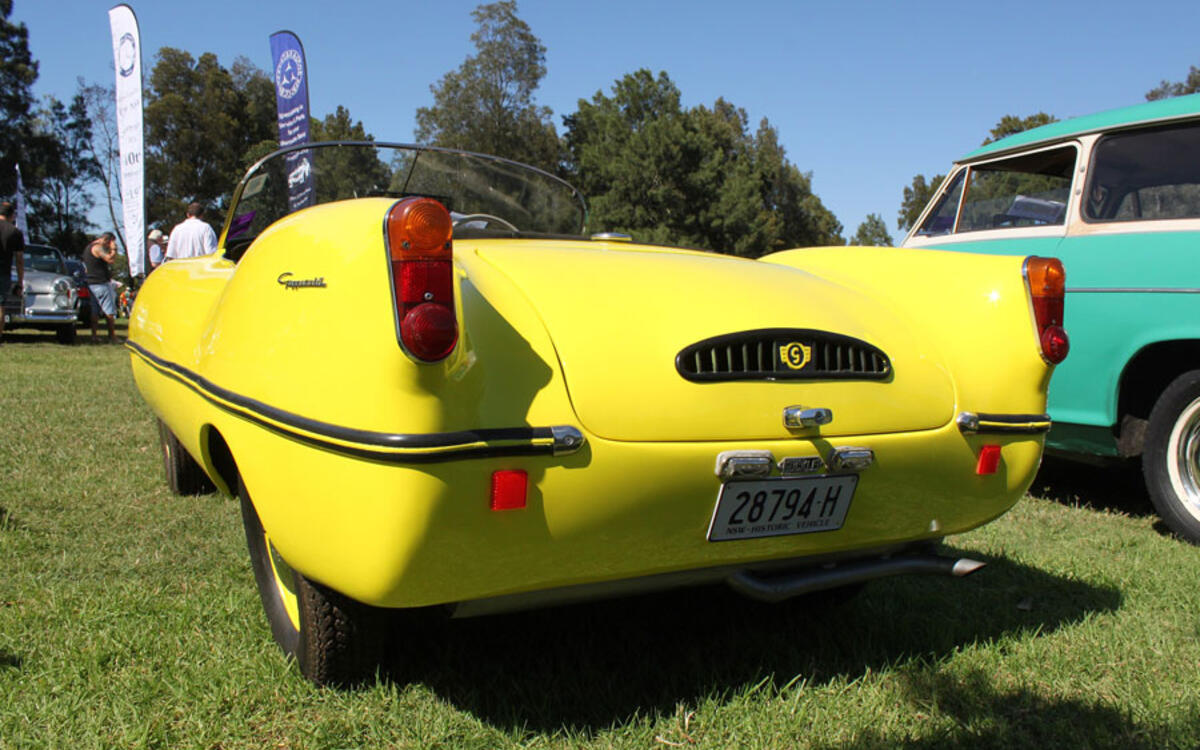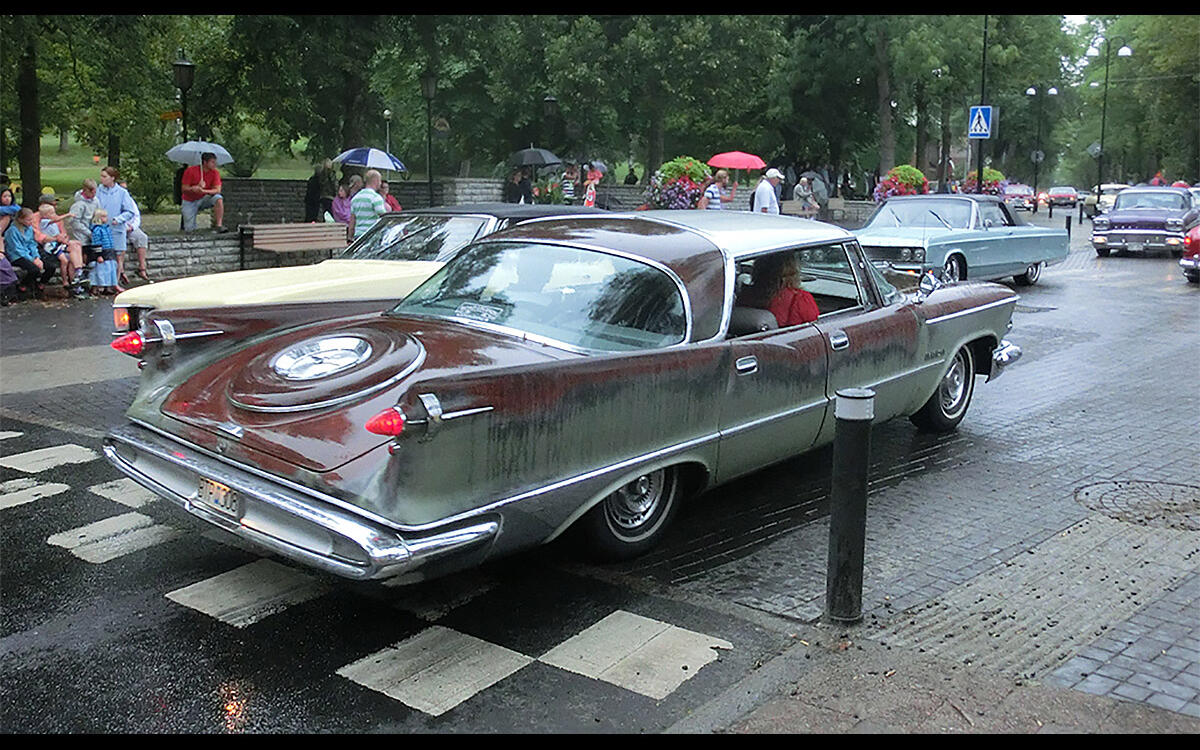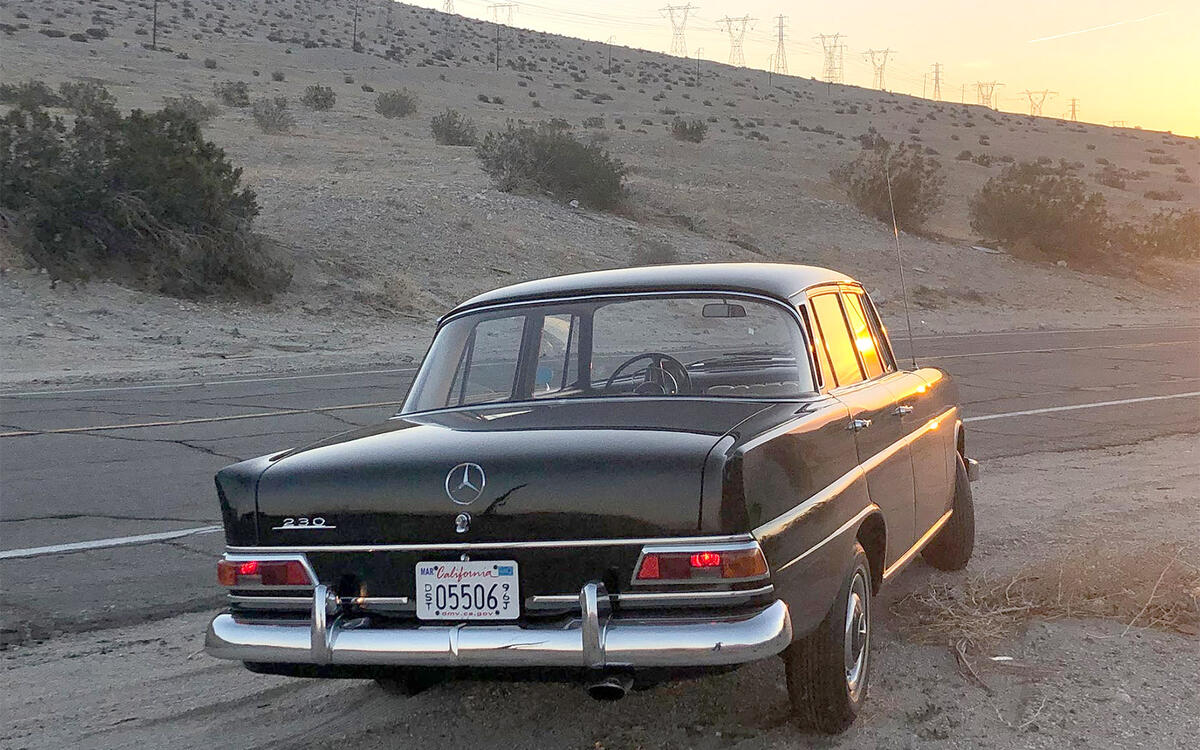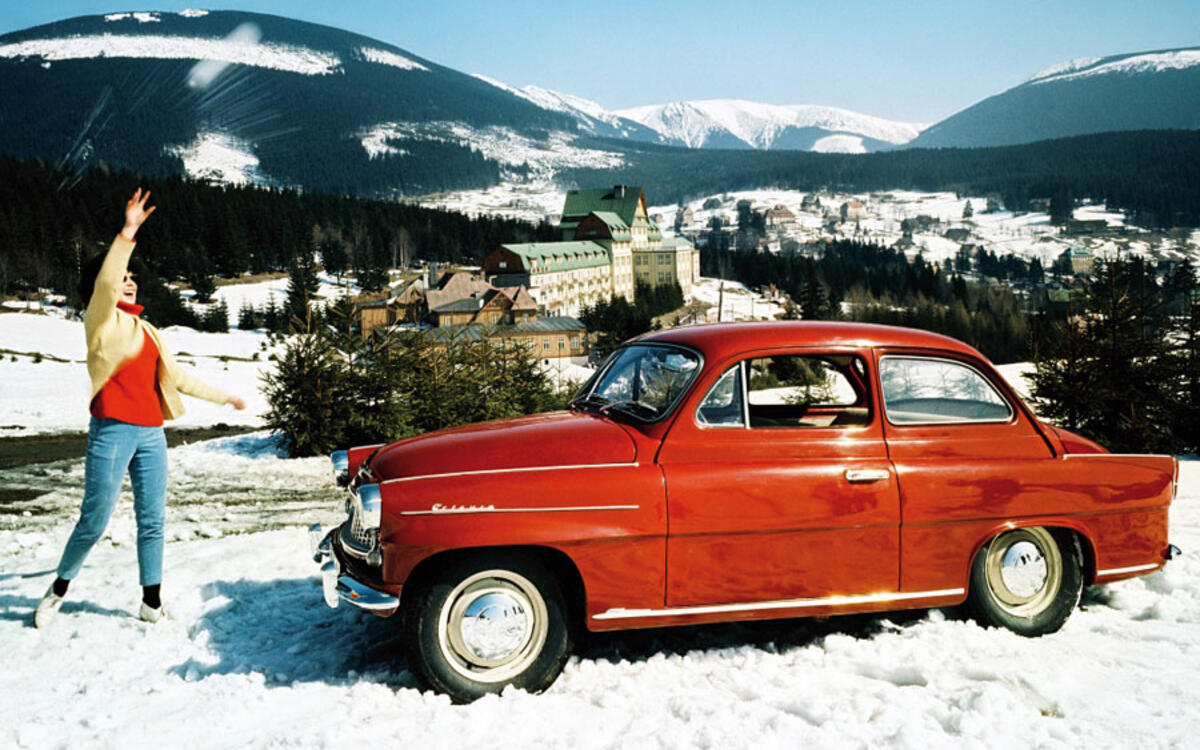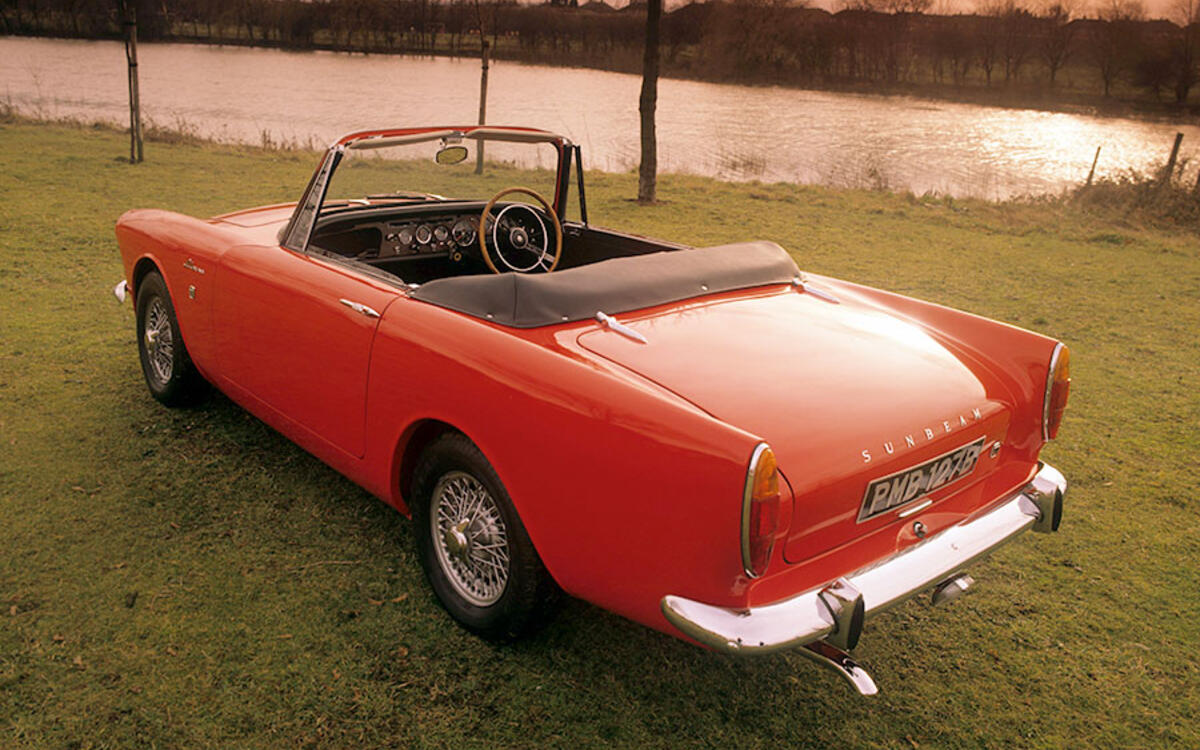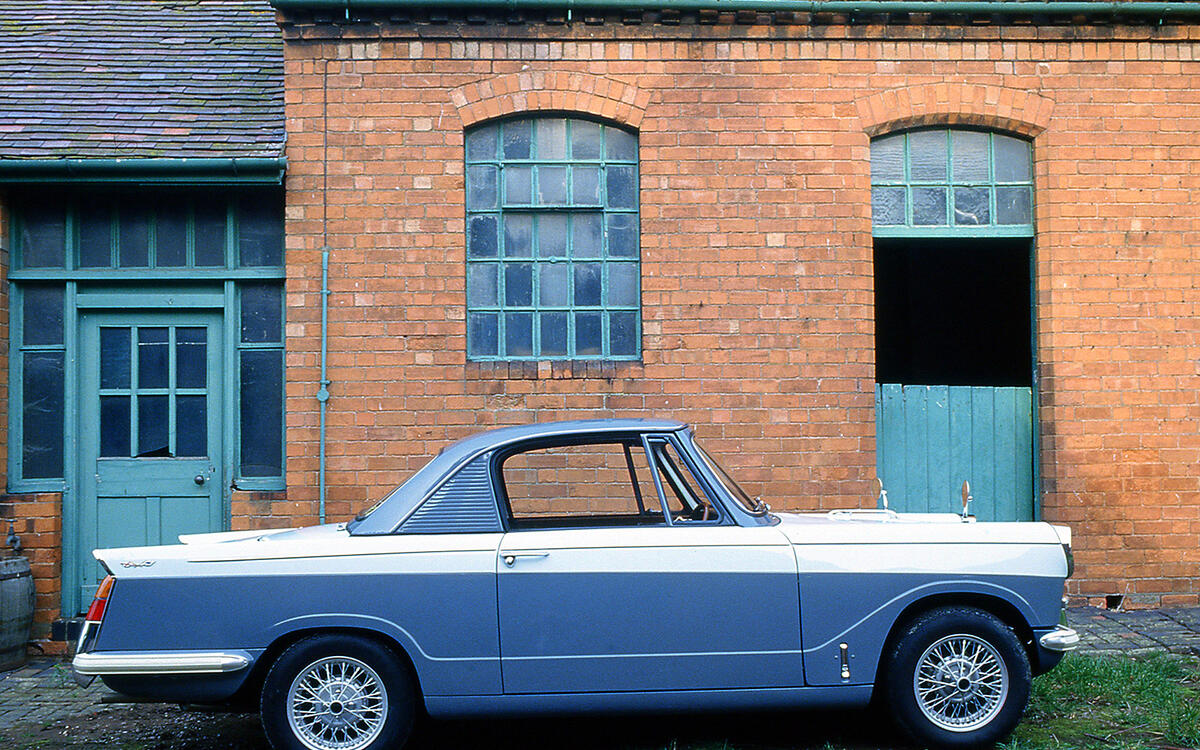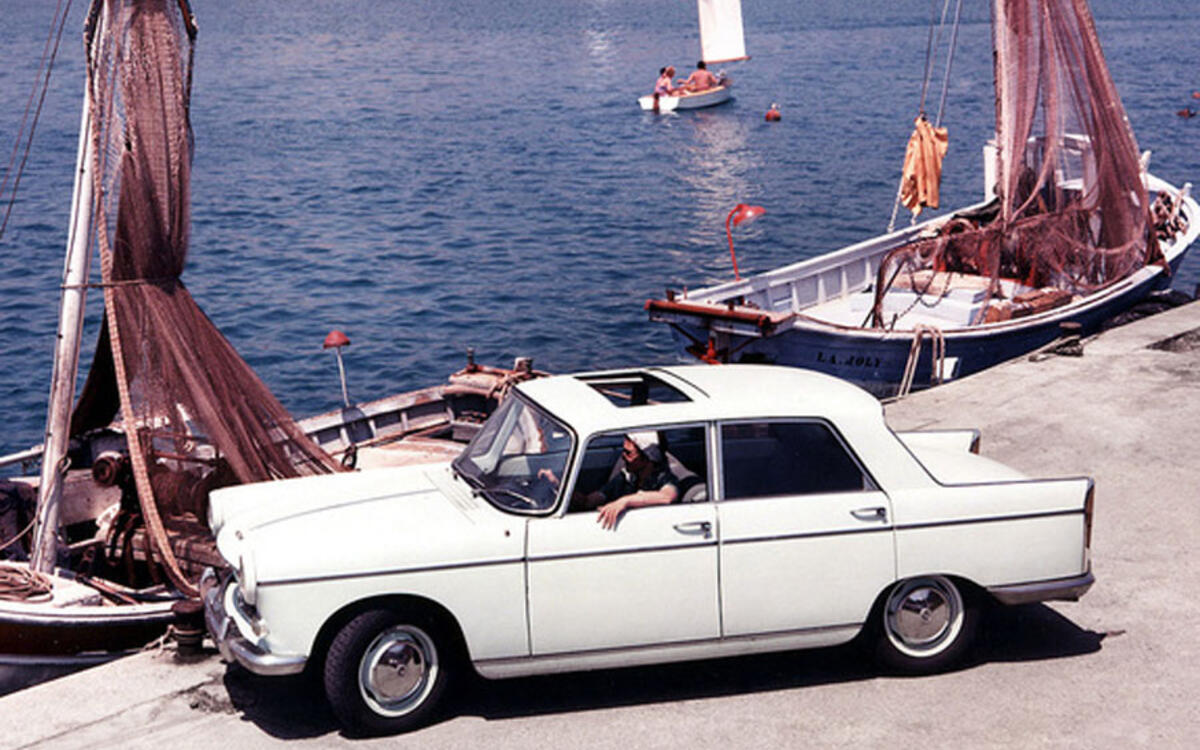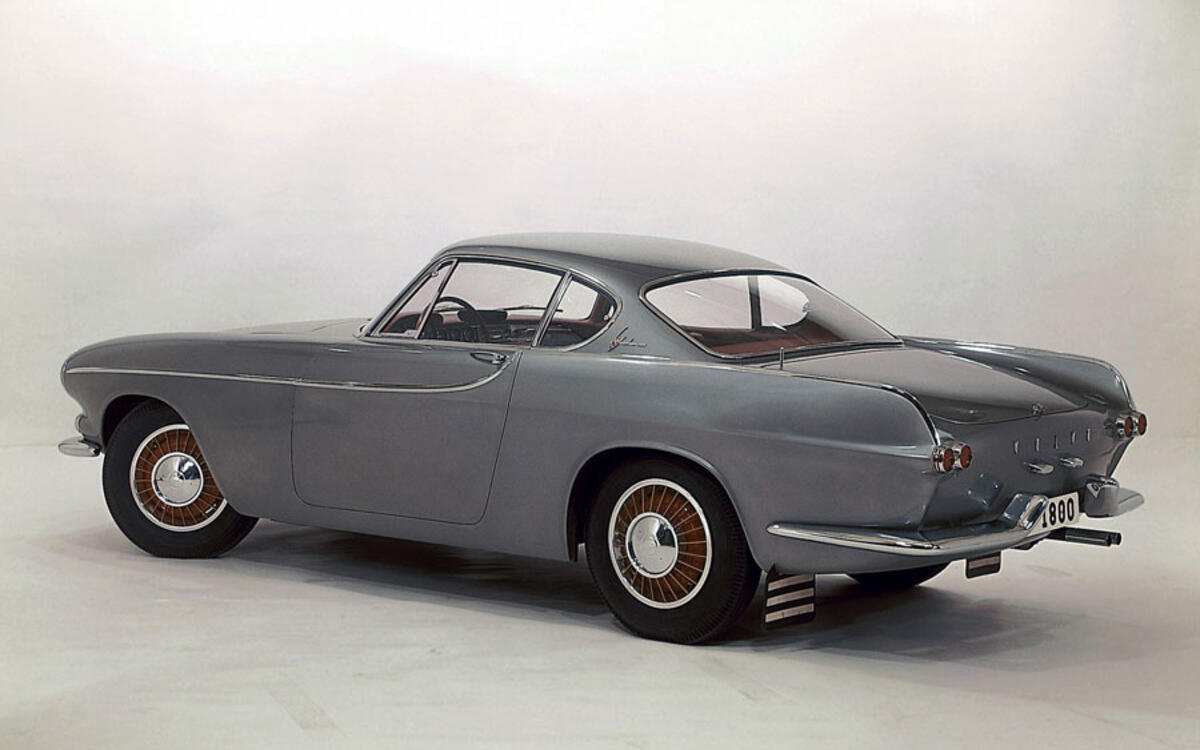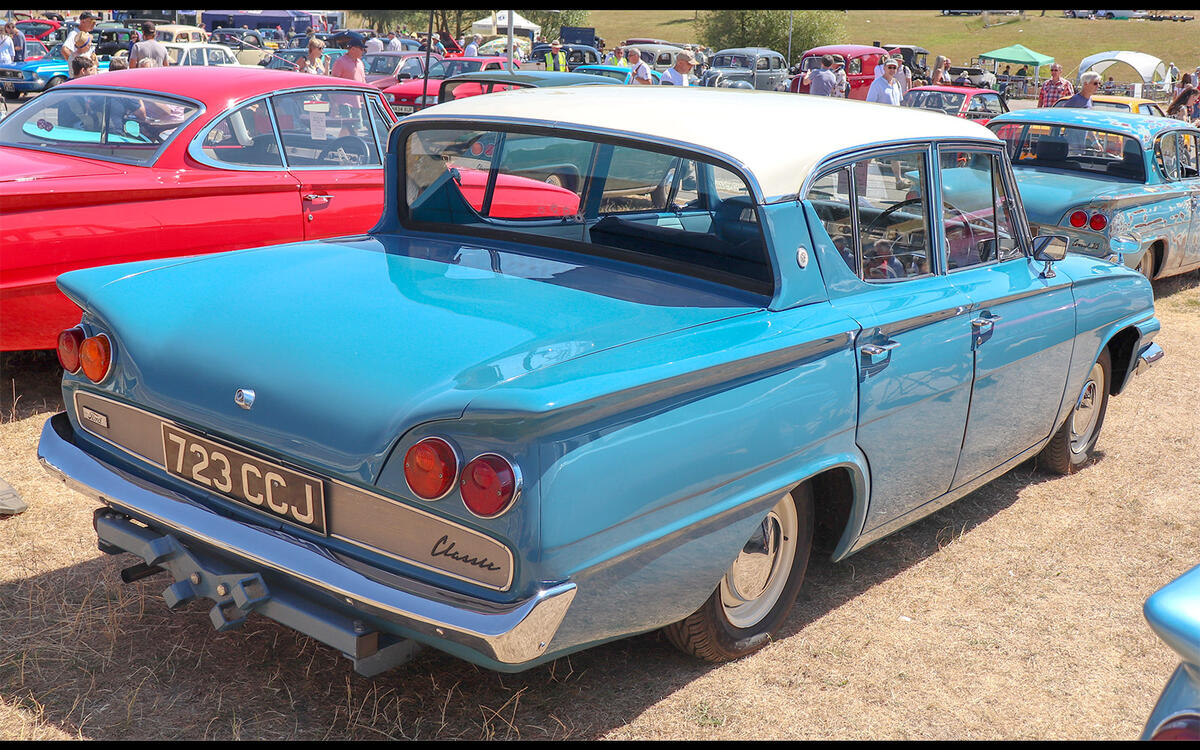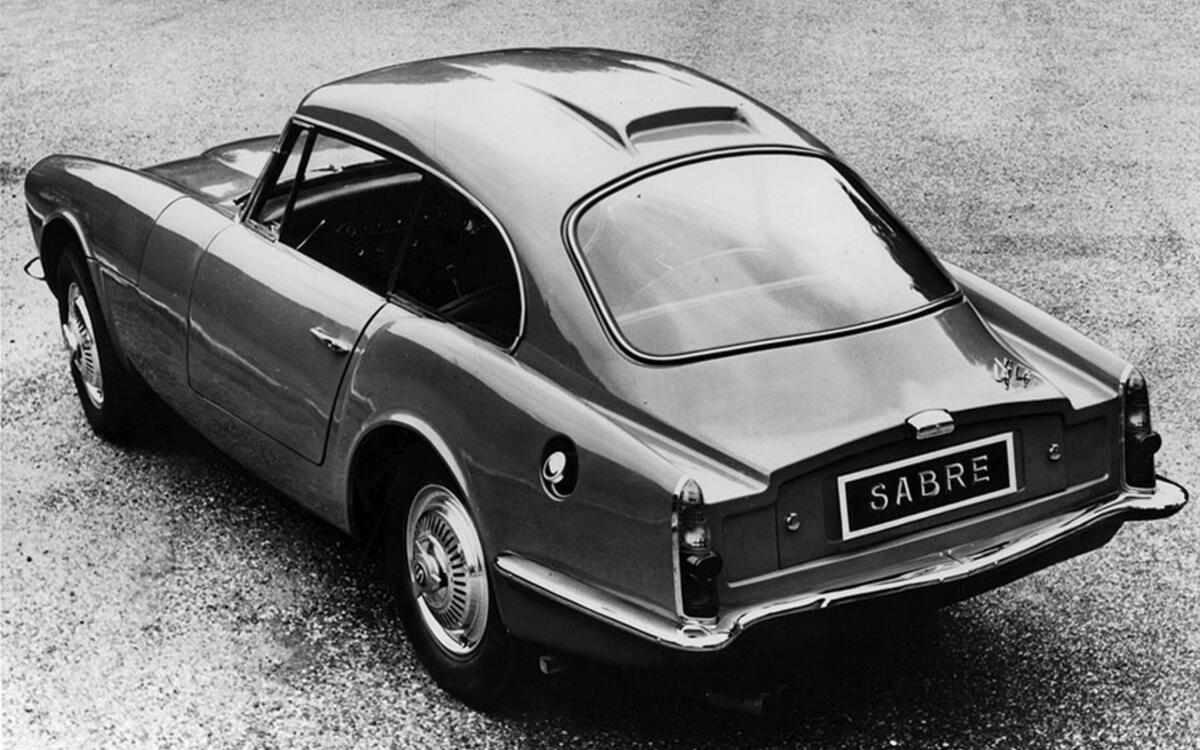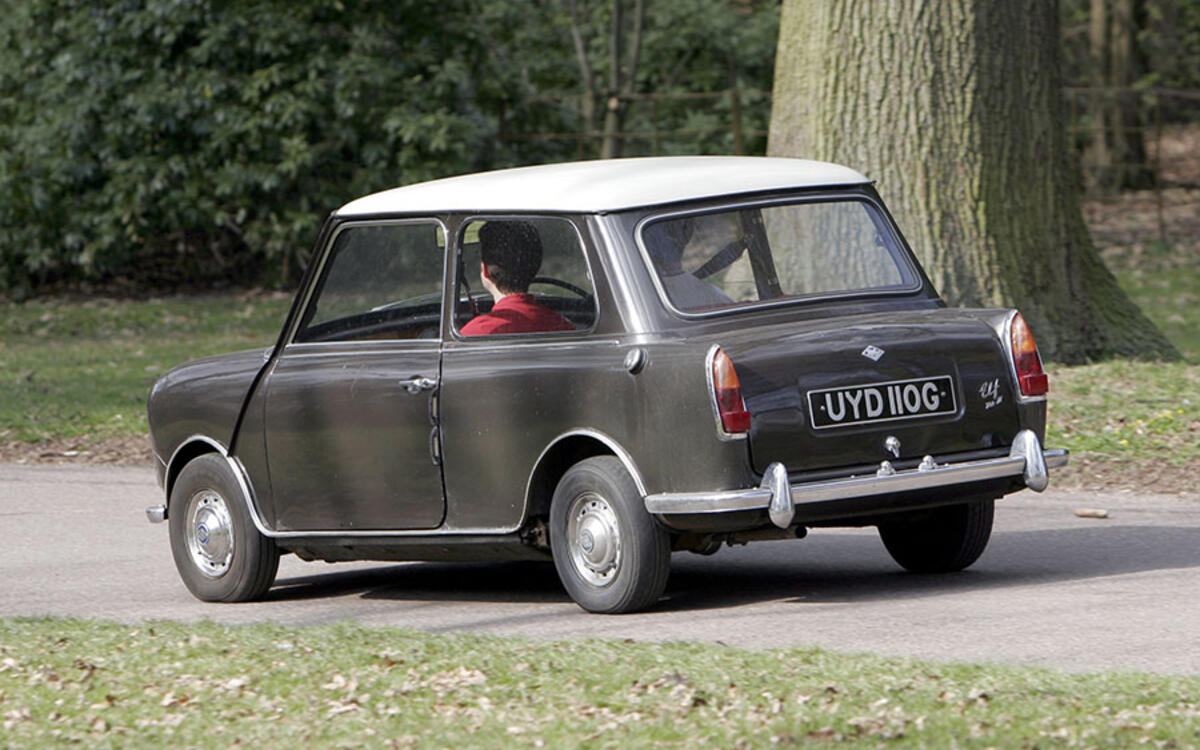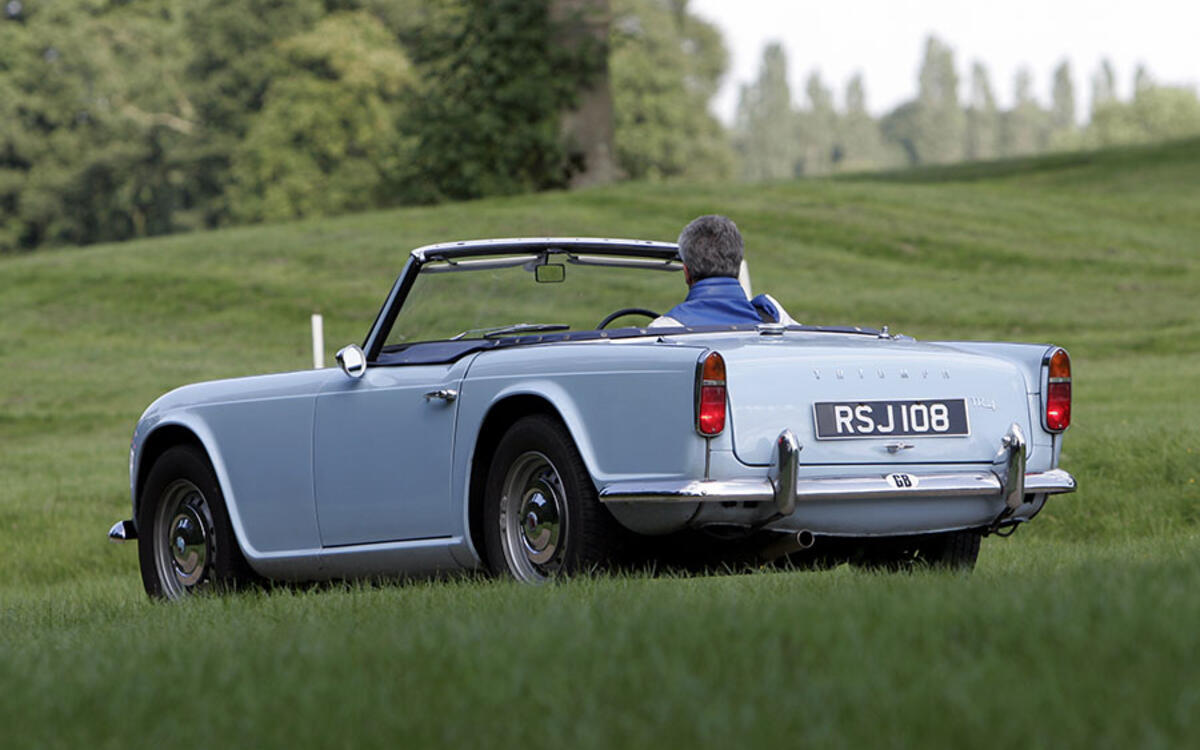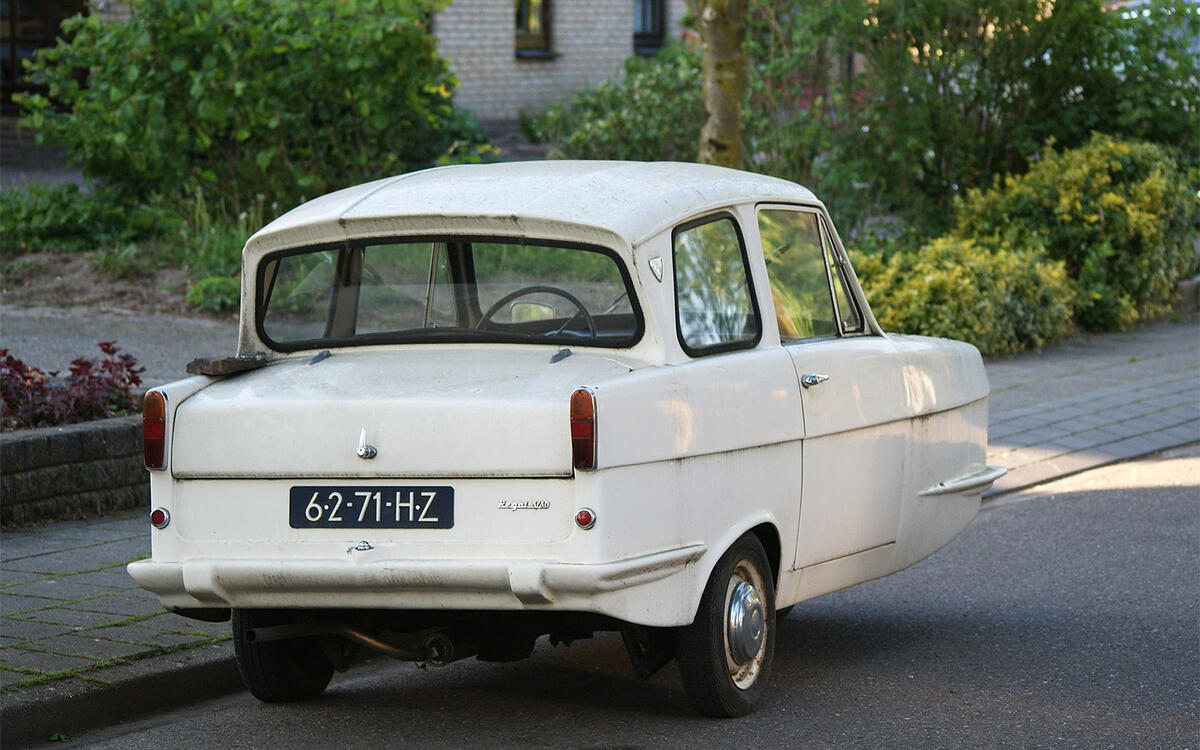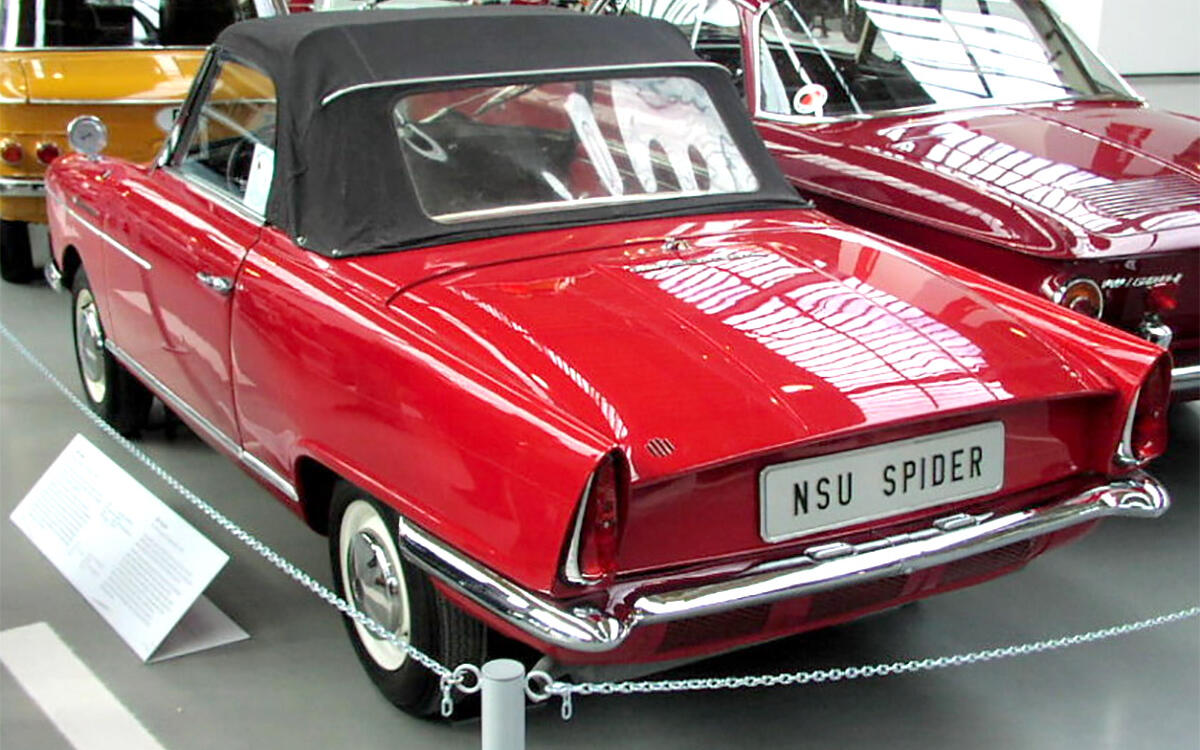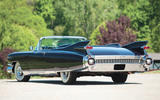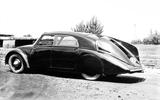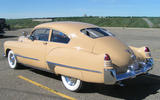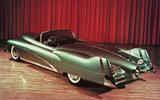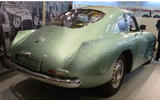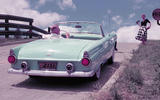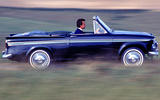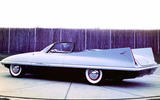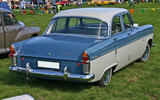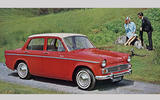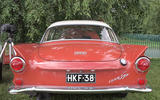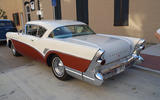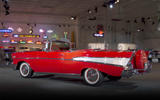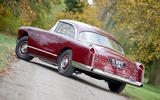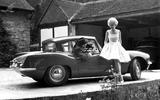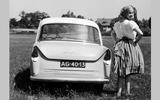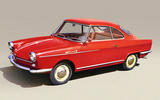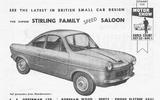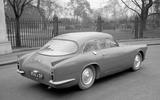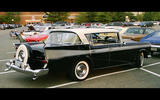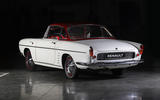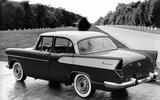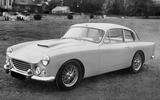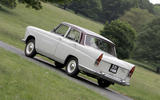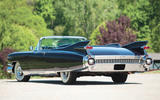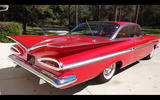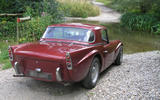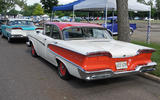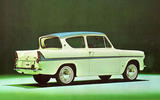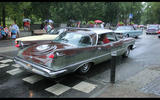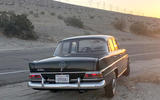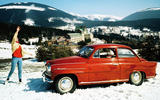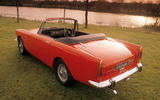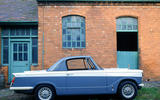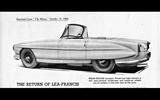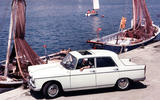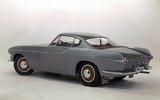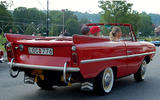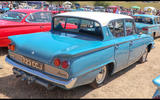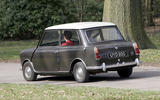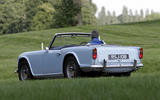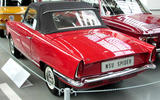 Slide of
Slide of
Throughout the 1950s and 1960s there were tailfins everywhere – then just like that, they were gone…
The 1950s was the jet age, with air travel becoming a reality for more people and space exploration on the horizon. Car makers played on this with designs that were increasingly outrageous with their use of fins, and while the trend began in the US it would spread around the world before dying out in the 1960s.
So while we could have filled this gallery with American classics of the fifties, we've cast our net rather wider to find the finest fins ever made:
 Slide of
Slide of
Tatra T77 (1934)
We're starting off with a car that's different from all of the others here, in that instead of having a pair of fins the Czech-built Tatra T77 featured just one central item. Designed by Paul Jaray and Hans Ledwinka as an object lesson in what could be achieved aerodynamically with a passenger car, the T77 was powered by an air-cooled V8 mounted in the rear.
 Slide of
Slide of
Cadillac 1948
This is where it all started; the first tail fins to be fitted purely for decoration, and just hinting at things to come. The man behind it was GM design chief Harley Earl (1893-1969), who was also responsible for some of the most jaw-dropping production and concept cars of the forties and fifties. Little did Earl know what was to come – or maybe he did…
 Slide of
Slide of
Buick Le Sabre concept (1951)
At the end of the 1950s Buick would put a Le Sabre into production, but this is the original concept, a runner that Harley Earl used as his everyday transport for two years. Advanced in its design and engineering, the Le Sabre was powered by a 215cu in V8 – the same all-alloy unit that Britain’s Rover would later adopt and keep in production for more than 20 years.
 Slide of
Slide of
Bristol 404 (1953)
Bristol Cars grew out of the Bristol Aeroplane Company and as a result there was quite a lot of crossover when it came to the construction and design of these enigmatic and expensive grand tourers. Just 52 examples of the 404 were made, each powered by a 1971cc straight-six engine that gave up to 140bhp and 110mph.
 Slide of
Slide of
Ford Thunderbird (1955)
We could have picked the first- or second-generation Thunderbird as both featured tail fins, but we've opted for what most fans consider the original and best. It was the Thunderbird that created the 'personal luxury car' as Ford dubbed it, so all of these cars came with V8 power as standard, along with a glassfibre hard top as all of the early T-Birds were two-seater convertibles.
 Slide of
Slide of
Sunbeam Rapier (1955)
The Rootes Group's two-door take on the Hillman Minx, which is coming up later. At first the fins were pretty subtle, but as the fifties wore on a facelift made them more prominent, and that's the way they stayed until the Rapier went out of production in 1967.
 Slide of
Slide of
Chrysler Dart (1956)
It may have been a concept with no chance of reaching production, but the Chrysler Dart's fins weren't that much more outrageous than some of the designs seen in showrooms across the US in the latter part of the 1950s. The steel roof retracted into the space behind the cabin, while power came from a 392cu in Hemi V8 rated at 375bhp.
 Slide of
Slide of
Ford Consul/Zephyr/Zodiac Mk2 (1956)
It took a while for fins to cross the Atlantic when it came to the motoring mainstream, but Ford was among the first with its 'Three Graces', better known as the four-cylinder Consul, along with the six-cylinder Zephyr and Zodiac Mk2. Offered in saloon and convertible forms, the Mk2s have become very collectible in recent years.
 Slide of
Slide of
Goggomobil TS300/TS400 (1956)
Hans Glas (1890-1969) started out by building scooters in 1951, before progressing to the Goggomobil saloon in 1955. A year later came his most stylish product of all – the TS300 and TS400 coupés with 296cc or 395cc two-cylinder engines. These were popular cars with almost 15,000 made in all, between 1956 and 1967.
 Slide of
Slide of
Hillman Minx (1956)
Overshadowed by its higher-profile rivals from Ford and Vauxhall, the Hillman Minx was part of the Rootes Group line-up. Rootes just loved a bit (quite a lot) of badge engineering which is why you could also buy this neatly styled saloon, convertible or estate in Singer (Gazelle) and Sunbeam (Rapier coupé) forms. Annual updates meant there were 1390cc, 1494cc, 1592cc and 1725cc engines offered during a production run that continued to 1965.
 Slide of
Slide of
Auto Union 1000SP (1957)
Also sold as the DKW Type 1000, the Auto Union 1000SP was a neatly styled two-seater convertible powered by a three-cylinder engine that displaced just 980cc to give 55bhp. Designed by Baur, it looked just like a Ford Thunderbird in miniature. Built for eight years, 6640 were made.
 Slide of
Slide of
Buick Roadmaster (1957)
The original Roadmaster was introduced by Buick in 1936, a luxury car for those who wanted the best. This first Roadmaster created a template that Buick would follow for more than two decades and seven generations. The final generation (before the Roadmaster name took a 30-year hiatus) was the 1957 model which came in saloon, coupé and convertible forms, all powered by a 364cu in (6.0-litre) V8.
 Slide of
Slide of
Chevrolet Bel Air (1957)
The final iteration of the Tri-Chevys that ran for three years from 1955, the '57 Chevy was the ultimate edition with its generously proportioned fins, sleek styling and luxurious interior. Top of the line was the Bel Air, which was merely a trim level; below this sat the 150 and 210 for those on a tighter budget.
 Slide of
Slide of
Facel Vega HK500 (1957)
Barely known outside its native France, Facel Vega was the Gallic equivalent of Bristol. As such it produced costly hand-made GTs often powered by Chrysler V8s. The HK500 is perhaps the best-known Facel Vega and it was one of the biggest selling, with around 500 made over four years. Power came from a Chrysler V8 displacing 5.9 or 6.3 litres.
 Slide of
Slide of
Vauxhall Cresta/Velox PA (1957)
As part of General Motors, Vauxhall embraced American styling wholeheartedly for many of its fifties and sixties European models, and nowhere was this more apparent than with the Cresta PA. All PAs featured tailfins and while three-piece screens were fitted front and rear, by 1960 these had been swapped for huge curved screens that were pure Americana.
 Slide of
Slide of
Elva Courier (1958)
Taking its name from the French for 'she goes' (Elle Va), the Elva Courier was a basic, affordable sports car that could be bought in kit form to keep costs to a minimum. Power was supplied by Riley (1489cc) or MGA (1588cc) engines to give up to 100mph. About 400 Couriers were built in all.
 Slide of
Slide of
Daf 600 (1958)
Although lots of cars have been made in Holland over the years, it hasn't had many home-grown brands. Perhaps the best known is Daf, which burst on to the scene in 1958 with a car that featured an ingenious belt-driven automatic transmission called Variomatic – a technology that failed to catch on for years, but which started to gain popularity in the 1980s. Now they're everywhere.
 Slide of
Slide of
Fairthorpe Atomota (1958)
Fairthorpe introduced its first car in 1954. That was the Atom, which was developed into the befinned Atomota in 1958. The standard car came with a 646cc two-cylinder BSA engine or there was an Atomota Major option, with a 948cc four-cylinder Standard powerplant. Few were made and just two survivors are known.
 Slide of
Slide of
NSU Sport Prinz (1958)
In 1957 German motorcycle manufacturer NSU turned its hand to car production and the Prinz was the result. An economy car with a 583cc two-cylinder engine, Bertone worked its magic and came up with this much smarter-looking coupé with the same mechanicals. From 1961 a 598cc engine was fitted and by the time production ended in 1967, almost 21,000 Sport Prinzes had been made.
 Slide of
Slide of
Opperman Stirling (1958)
It may have sounded German but the Opperman actually came from Essex. The company introduced its first car in 1956; the two-cylinder Unicar of which just a handful were made. The Stirling was a sports version of the Unicar but it still featured just a two-cylinder engine that displaced all of 424cc. The Stirling was offered from 1958-1958 and just two were made.
 Slide of
Slide of
Peerless GT (1958)
With its Triumph TR3 running gear, this neatly designed four-seater coupé featured a lightweight glassfibre bodyshell bonded and riveted to a steel chassis to give a top speed of more than 100mph. Almost 300 were made before Peerless went bust in 1958, but the project was revived as the Warwick in 1960 and another 40 or so cars were made, also called the GT.
 Slide of
Slide of
Rambler Ambassador (1958)
The American Motors Corporation (AMC) was formed in 1954 when Hudson and Nash-Kelvinator merged. Nash had introduced a compact car called the Rambler in 1950 and by 1958 Rambler had become an AMC marque in its own right, as an economy brand. At the top of the company's price lists was the Ambassador, offered in saloon or station wagon forms with a 327cu in (5.4-litre) V8 as standard.
 Slide of
Slide of
Renault Floride (1958)
The Floride was Renault's first sports car, although it wasn't especially quick with just 845cc to propel it along. However, with that engine in the rear and swing-axle rear suspension the Floride could be quite a handful in the bends. For 1962 the Floride was updated to become the Caravelle with engines of either 956cc or 1108cc for a bit more go – up to 90mph was possible with the bigger unit.
 Slide of
Slide of
Simca Vedette (1958)
Here's an odd one for you. This car started out as the Ford Vedette, but when Ford France sold its Poissy factory to French company Simca, the tooling for this large saloon went with it. Launched in 1954 but facelifted in 1958 (which is when the fins were added), a cheaper version of the Vedette was also offered, called the Ariane. Production lasted until 1961.
 Slide of
Slide of
Studebaker Golden Hawk (1956)
Studebaker launched the Flight Hawk, Power Hawk, Sky Hawk and Golden Hawk in 1956; the latter was the only Hawk to feature (glassfibre) tail fins. From 1957 the range was simplified to consist of Silver Hawk or Golden Hawk, both with steel tail fins; they featured naturally aspirated and supercharged V8s respectively. The final Hawks were made early in 1960.
 Slide of
Slide of
AC Greyhound (1959)
Sold alongside the Ace, which was the car that was developed into the AC Cobra, the Greyhound was a gentleman's express which was pitched against the contemporary Bristol. Fast, luxurious and exclusive, just 83 Greyhounds were made between 1959 and 1963.
 Slide of
Slide of
BMC Farinas (1959)
We could fill a gallery just with the various flavours of BMC Farina that were produced. Sold in Austin, Morris, Riley, Wolseley, Vanden Plas and MG forms, there were also four-or six-cylinder versions of this Pininfarina-designed saloon and estate. By 1961 a facelifted car had been launched, with toned-down fins.
 Slide of
Slide of
BMW 700 (1959)
The BMW 700 is all but forgotten nowadays, yet almost 190,000 of them were made in a six-year production run. Styled by Giovanni Michelotti (1921-1980), the 700 came in coupé and cabriolet forms and was fitted with a 697cc two-cylinder engine that gave up to 80mph.
 Slide of
Slide of
Buick Electra 225 (1959)
Sitting at the top of Buick's range, the Electra 225 was big, brash and luxurious. It came only with a 401ci (6568cc) V8 that deployed its 325bhp to the rear wheels via a two-speed automatic gearbox. Buyers could choose between a saloon, coupé or convertible, the latter getting electrically operated seats and windows as standard. Only the 1959 and 1960 Electras got big fins; by 1961 they'd been toned right down.
 Slide of
Slide of
Cadillac Eldorado (1959)
This was truly peak tail fin; the biggest, most lavish (and maybe even the most ridiculous) tail fins ever seen on a car. Buyers could choose between the Series 62, Eldorado and De Ville which came in saloon, coupé and (in the case of the first two) convertible forms. Powered by a 390ci (6.4-litre) V8 mated to a four-speed Hydramatic slushbox, these were the ultimate cruisers of their day. PICTURE: Cadillac Eldorado Biarritz
 Slide of
Slide of
Chevrolet Impala (1959)
The Chevrolet Impala was launched for the 1958 model year and just 12 months later a second-generation edition appeared, with a new bodyshell that featured far more impressive fins than before. Buyers could choose between saloon, coupé or convertible body styles, powered by straight-six or V8 engines. By 1960 things had been toned down already, as fins started to fall out of fashion.
 Slide of
Slide of
Daimler SP250 (1959)
It took decades for the Daimler SP250 to gain acceptance. It was that awkward styling that put off potential buyers for so long, but with just 2645 examples made, each powered by a fabulously flexible and sweet 2548cc V8, this glassibre-bodied is now a bona fide classic that's very collectible.
 Slide of
Slide of
Edsel (1959)
Set up as a separate division within the Ford Motor Company, Edsel arrived in November 1956 and was dead three years later, one of the biggest flops in automotive history. Ford lost $250m on the Edsel project, with just 116,000 cars sold – which was less than half of what the brand needed to sell to break even. Nice fins though.
 Slide of
Slide of
Ford Anglia (1959)
Ford of Europe's car designs continued to be inspired by its cars from across the Pond. The Anglia 105E was radical for Ford, with its reverse-rake rear window and fins. Initially offered only in 997cc 105E guise, from 1962 there was a 123E option, with an 1197cc engine.
 Slide of
Slide of
Gilbern GT (1959)
Best known for being the first production car to be built in Wales, the GT was also Gilbern's first model. It was a good-looking car with its glassfibre 2+2 bodyshell powered by BMC engines (MGA, MGB or Sprite). Almost 300 were made between 1959 and 1967.
 Slide of
Slide of
Goggomobil Dart (1959)
We've already seen the Glas Goggomobil-based coupé. Three years after that car made its debut things took an unexpected turn when Australian company Buckle Motors introduced a two-seater barchetta with no doors, that utilised the Goggomobil's running gear. The rear-mounted engine configuration remained and between 1959 and 1961 about 700 Goggomobil Darts were made.
 Slide of
Slide of
Imperial LeBaron (1959)
Chrysler launched the Imperial as a model in 1926; in 1955 it was hived off as a separate luxury marque in a bid to take on Ford's Lincoln and GM's Cadillac. Always powered by a V8 and packed with the latest comfort gadgetry, the 1959 Imperial Le Baron shown here typifies the brand, with its brash chromework, generous proportions – and huge fins.
 Slide of
Slide of
Mercedes Fintail (1959)
Introduced as the costly 220S and fuel-injected 220SE in 1959, these saloons, coupés and convertibles were generically known as the Fintail. Cheaper 190 and diesel 190D options arrived in 1961, but these were always cars for the well-heeled.
 Slide of
Slide of
Skoda Octavia (1959)
In 1954 Skoda introduced its 440 and 445 saloon and estate. Four years later a convertible version of this was launched, called the Felicia, then just a year later came a big mechanical update and the 440/445 morphed into the Octavia which also came in saloon and estate forms. Up front was a 1089cc or 1221cc four-cylinder engine that drove the rear wheels.
 Slide of
Slide of
Sunbeam Alpine (1959)
The Rootes Group's answer to the MGA, then later the MGB, the Sunbeam Alpine was stylish, good to drive and well made. It was pretty quick too, with even the earliest cars capable of around 100mph. Things got really hairy in 1964 when the Carroll Shelby-developed Tiger appeared – it was a Sunbeam Alpine with a Ford V8 stuffed under the bonnet.
 Slide of
Slide of
Triumph Herald (1959)
Launched in the same year as the Ford Anglia and BMC Mini, the Herald was Triumph's take on the compact family car. Available in saloon, coupé, convertible and estate forms, the Herald featured superb all-round visibility, a super-tight turning circle and a flip-up bonnet that made maintenance simplicity itself. By the time the final Herald was made in 1971 those fins were looking pretty dated…
 Slide of
Slide of
Lea-Francis Lynx (1960)
Lea-Francis began by making bicycles. By 1904 it had progressed to building its first car, but things didn't get going until the 1920s. This is where it all ended; with an awkward-looking two-seater sports car. Powered by a Ford Zephyr six-cylinder engine the Lynx proved unsaleable with just three examples made before Lea Francis was consigned to the history books.
 Slide of
Slide of
Peugeot 404 (1960)
No we haven't already had the Peugeot 404 in this gallery. You're thinking of the BMC Farinas that arrived in 1959, so called because they were designed by Pininfarina. A year later the Peugeot 404 arrived, also designed by Pininfarina. We're not too sure how the design house got away with selling the same design to two different companies…
 Slide of
Slide of
Volvo 1800 (1960)
Surely the most stylish Volvo ever made, the P1800 was made famous in the sixties as the steed of Roger Moore in cult TV show The Saint. Although power was initially supplied by an 1800 engine (hence the name), from 1969 a 2.0-litre powerplant was fitted with either twin carburettors or fuel injection.
 Slide of
Slide of
Amphicar 770 (1961)
Hans Trippel was nothing if not an optimist, as when the Amphicar was launched he reckoned he could make and sell 20,000 of them each year. But in seven years he sold just 800 of these quirky amphibious cars powered by a Triumph Herald 1147cc engine.
 Slide of
Slide of
Ford Consul Classic (1961)
One of the last European Fords to feature fins, the Consul Classic came in saloon form (with two or four doors) or as the Capri coupé, with 1340cc or 1498cc engine and American design cues that didn't translate too well in Europe, which is why the cars were never a success for Ford.
 Slide of
Slide of
Reliant Sabre (1961)
Developed in conjunction with Israeli company Autocars (which sold the car as the Sabra), Reliant offered its own version called the Sabre. At first it came with a 1.7-litre four-cylinder engine, but a hefty front-end facelift in 1962 coincided with the introduction of a 2553cc six-cylinder powerplant. Fewer than 300 Sabres were made in all, a combination of coupés and convertibles.
 Slide of
Slide of
Riley Elf (1961)
Two years after the Mini was launched came this; a three-box version of the iconic two-box saloon. Also sold in Wolseley Hornet form, the Riley Elf initially came with an 848cc engine which was later increased to 998cc. With a more luxurious cabin than the Mini, the Elf was just as much fun to drive but it hardly set the sales charts alight: fewer than 31,000 were made in eight years along with 28,455 Hornets.
 Slide of
Slide of
Triumph TR4 (1961)
When Giovanni Michelotti penned the TR3A replacement he was clearly hedging his bets. He kept the new TR's fins pretty low-key as they were already falling out of favour, but he didn't want to dispense with them altogether. In the event the TR4 would become the TR4A and then the TR5, so it wasn't until the arrival of the TR6 in 1969 that they disappeared altogether.
 Slide of
Slide of
Ford Zephyr/Zodiac Mk3 (1962)
The last European Ford to feature fins, the third-generation Zephyr (pictured) and Zodiac looked ultra-modern when launched in 1962, although it hasn't aged well. The Zephyr came with four or six cylinders while the Zodiac got only the bigger powerplant, a 2553cc in-line unit that gave a top speed of around 100mph.
 Slide of
Slide of
Reliant Regal (1962)
British TV show Only Fools and Horses featured ones of these as one of its star 'characters' – although Del Boy's Regal van is often incorrectly referred to as a Reliant Robin. Offered in saloon, estate and van forms, power initially came from a 598cc engine, later boosted to 701cc.
 Slide of
Slide of
NSU Wankel Spider (1963)
The world's first production rotary-engined car was this very pretty two-seater convertible that could do 95mph once the engine was at full tilt (in that brief period before it failed altogether). Just 2375 were made between 1963 and 1967 and they're now extremely rare.
By the early 1960s, the glory days of the fin were well and truly over as design themes and fashions moved on from a feature that was very much associated with the decade before. To cut a long story short, if you were a car maker and you wanted to make your new car look up-the-minute – and you usually did – then using fins wasn’t the way to go. And so fins went.
If you enjoyed this story, sign up to Autocar’s newsletter for all the best car news, reviews and opinion direct to your inbox. Click here to subscribe.
Tailfins were a design cue that symbolised an optimistic period in the 1950s, especially in America. We trace the finest cars with finest fins
Advertisement

